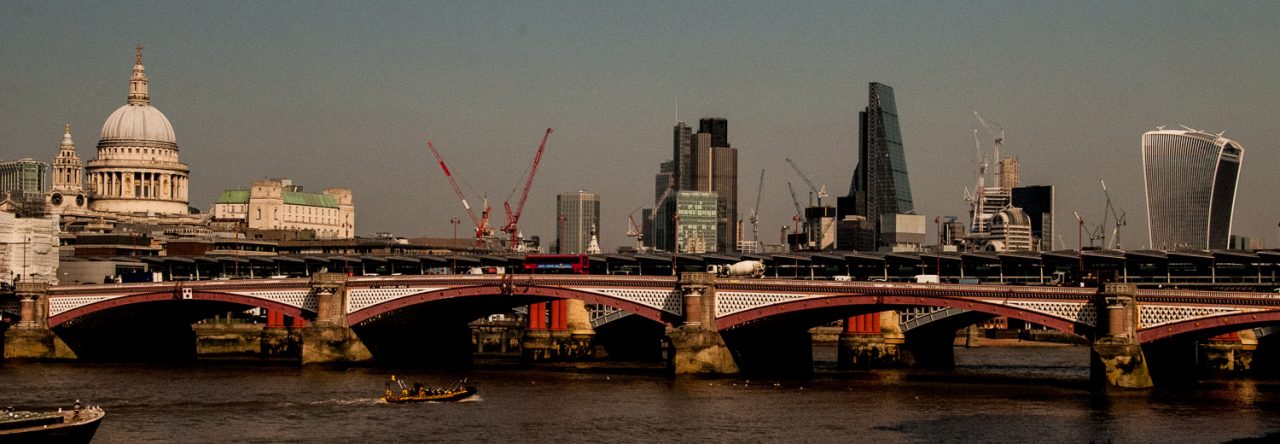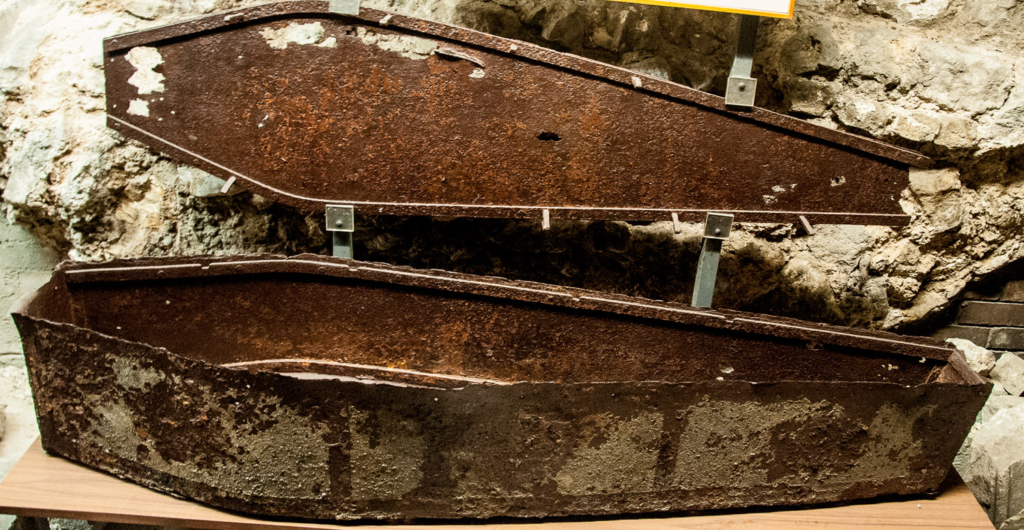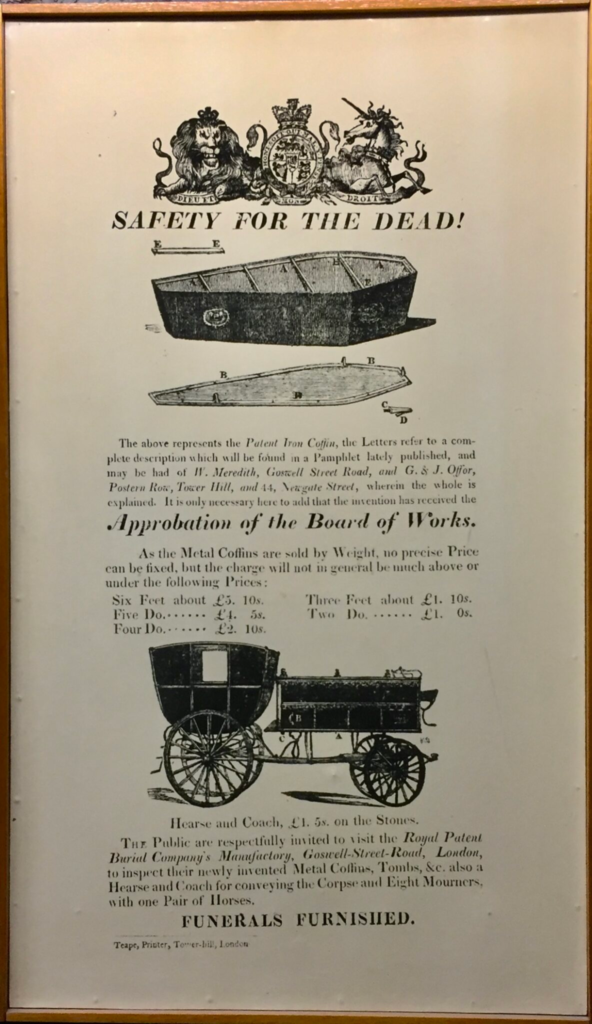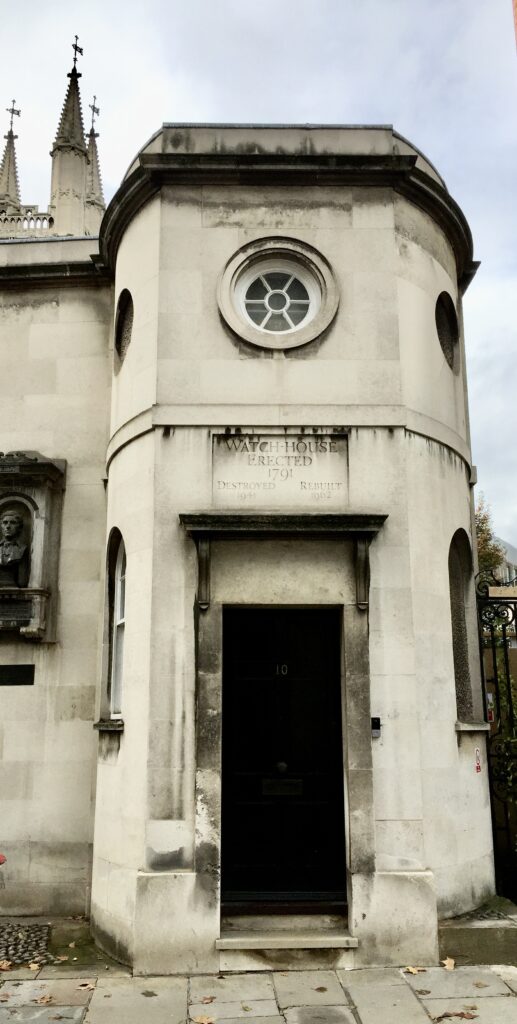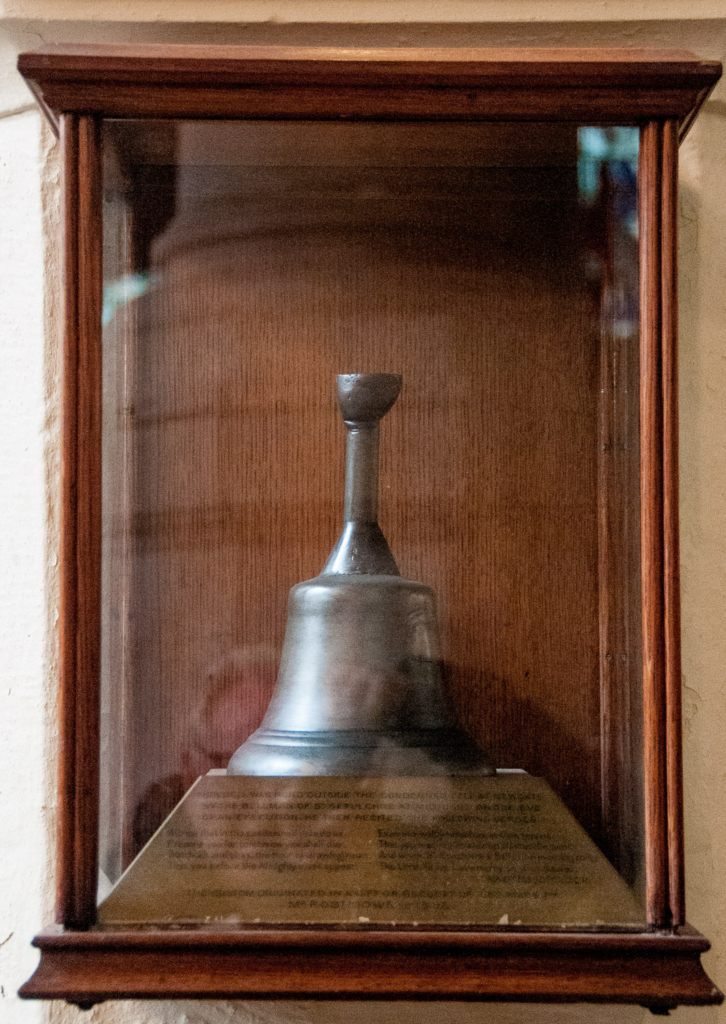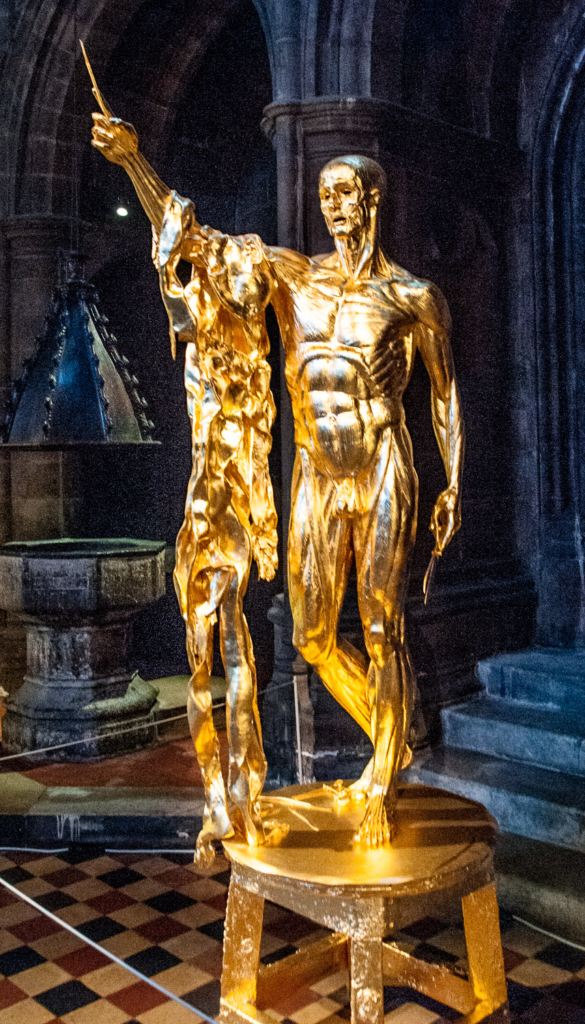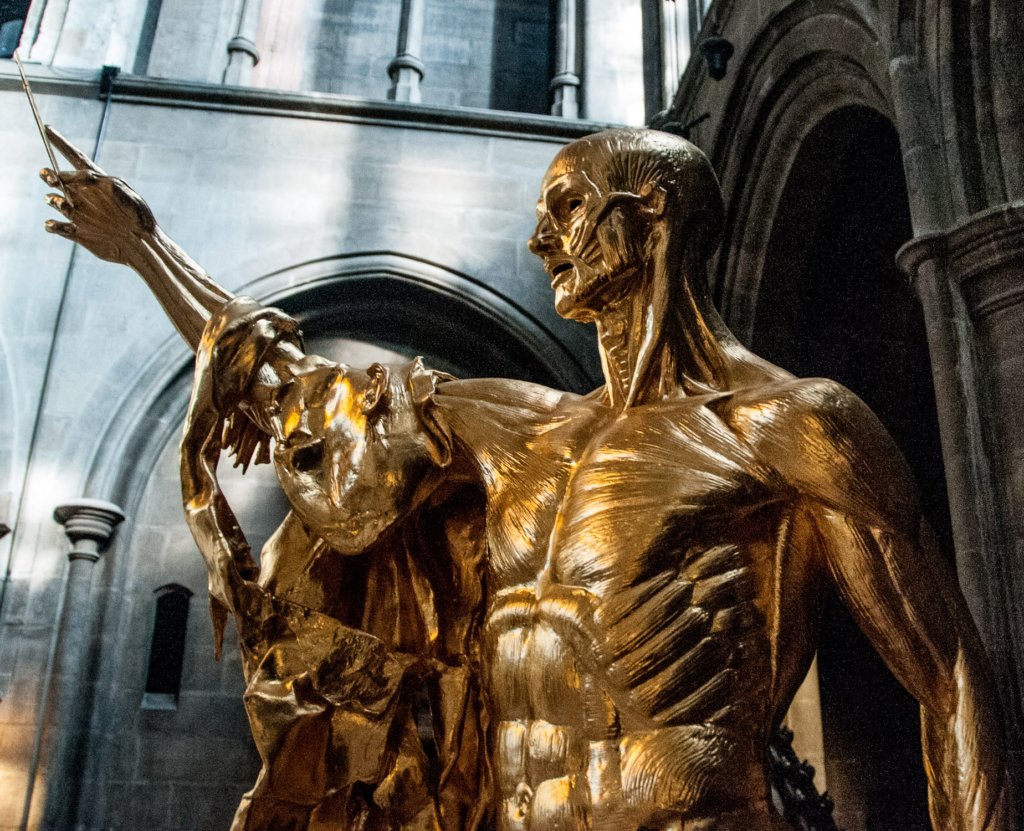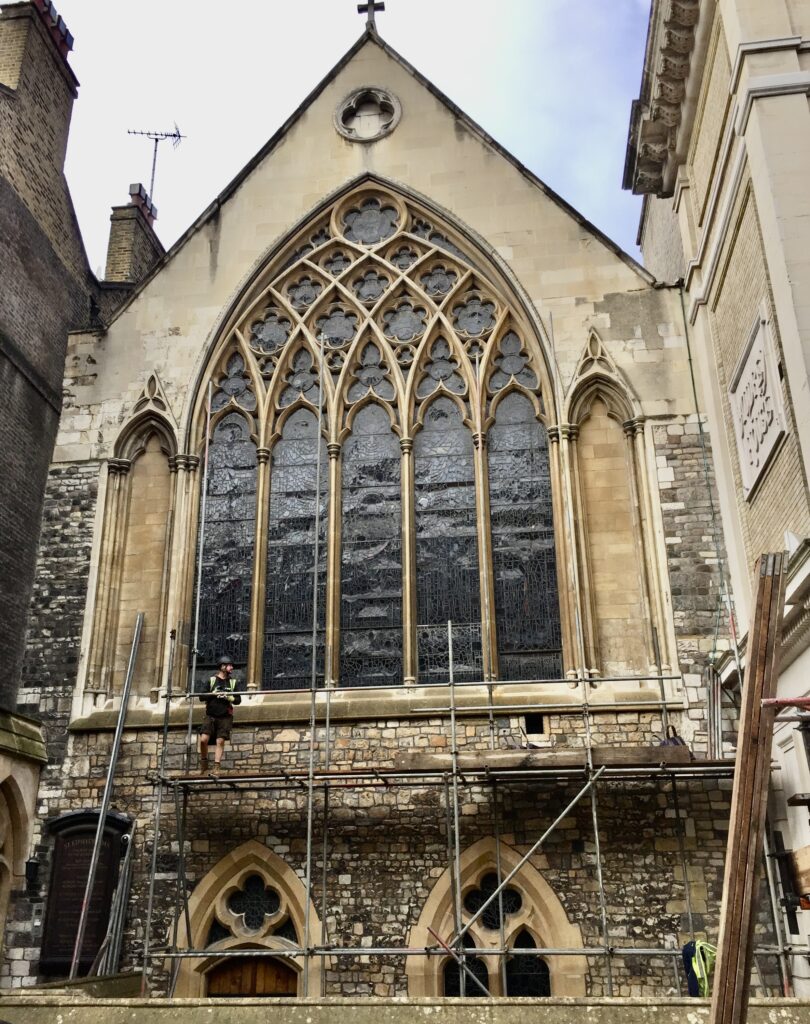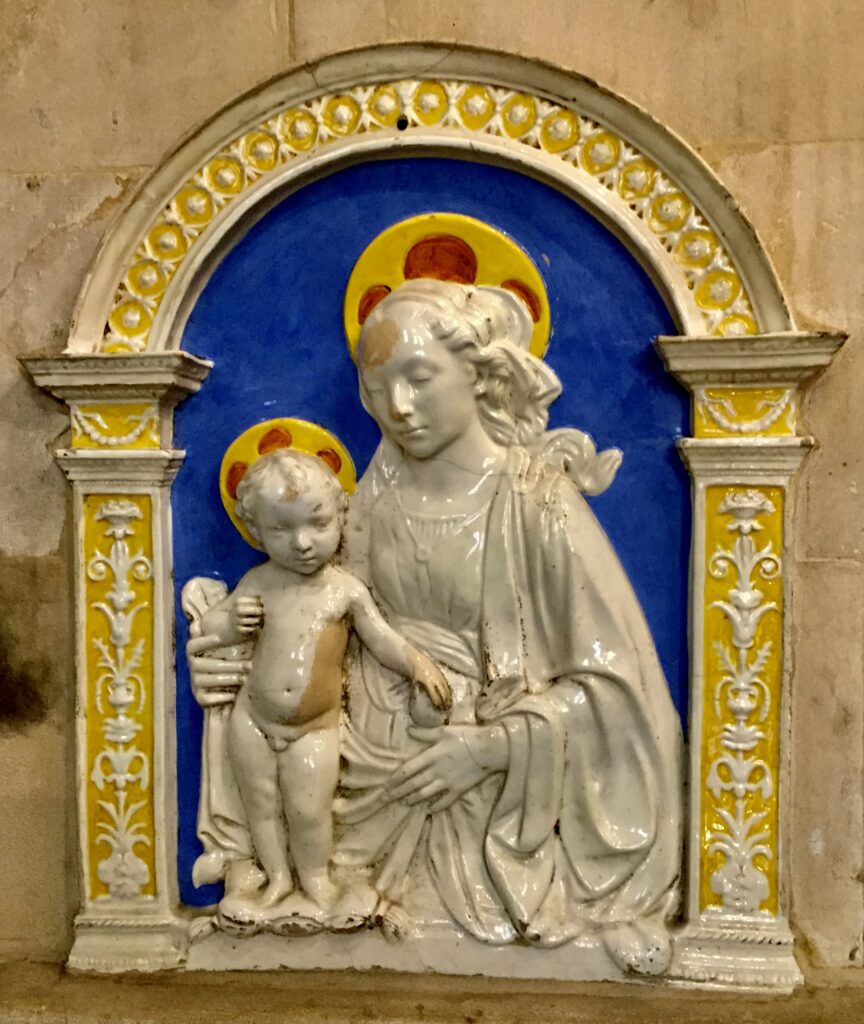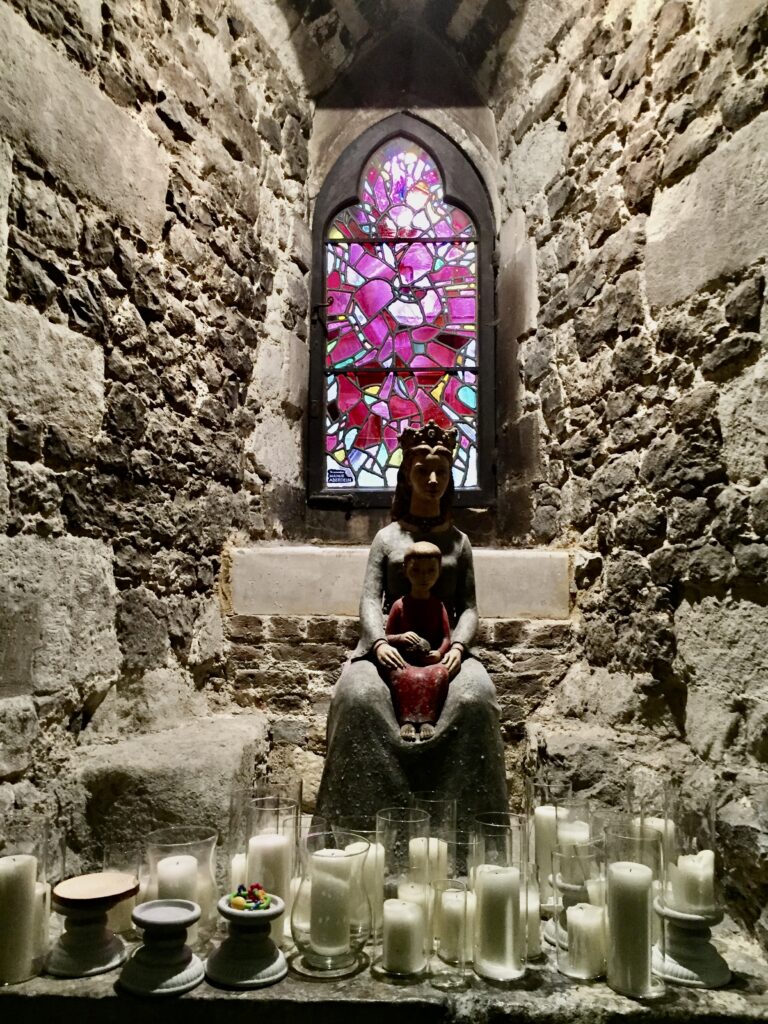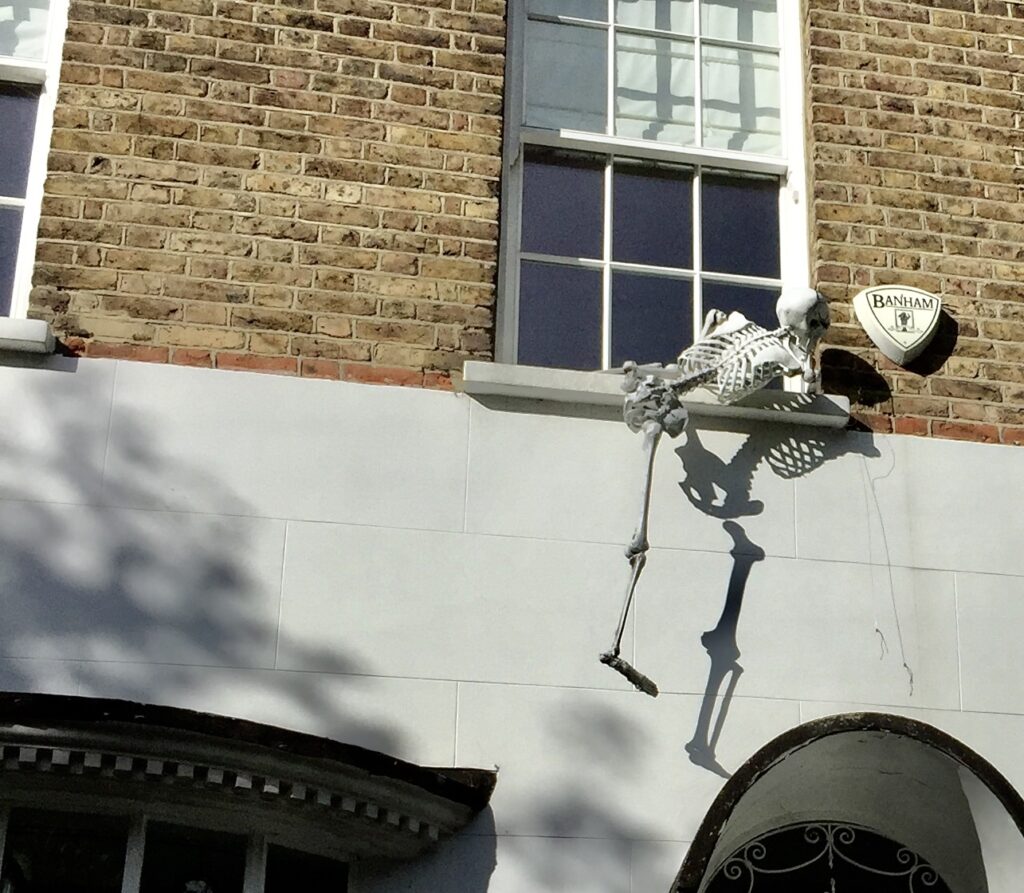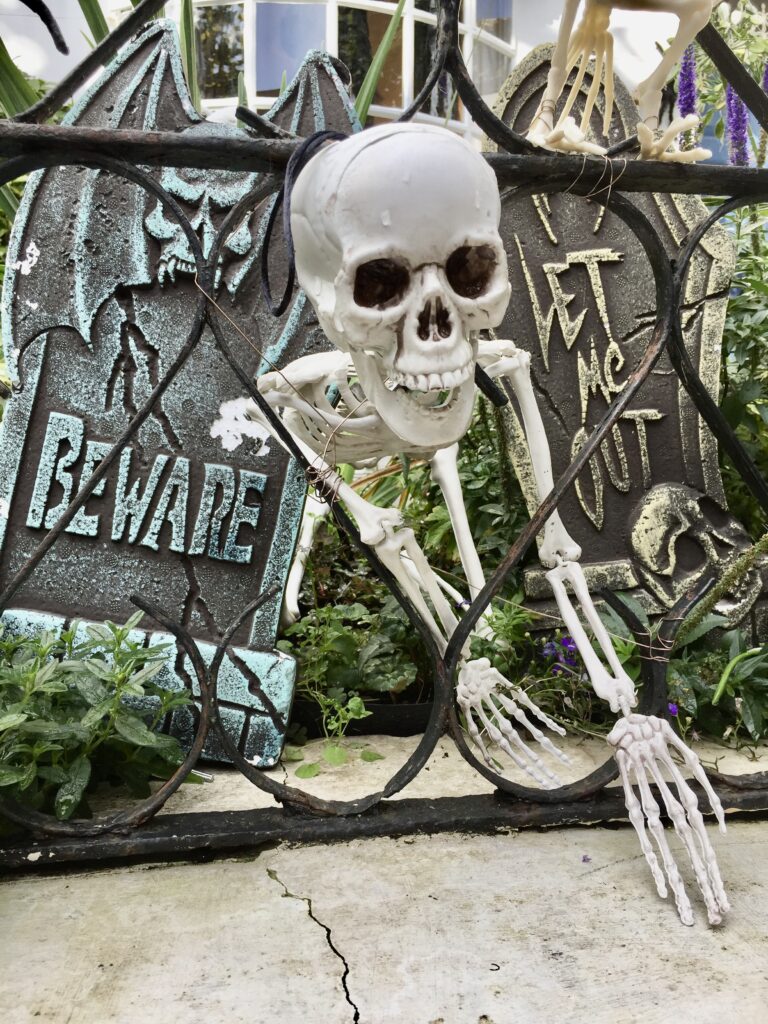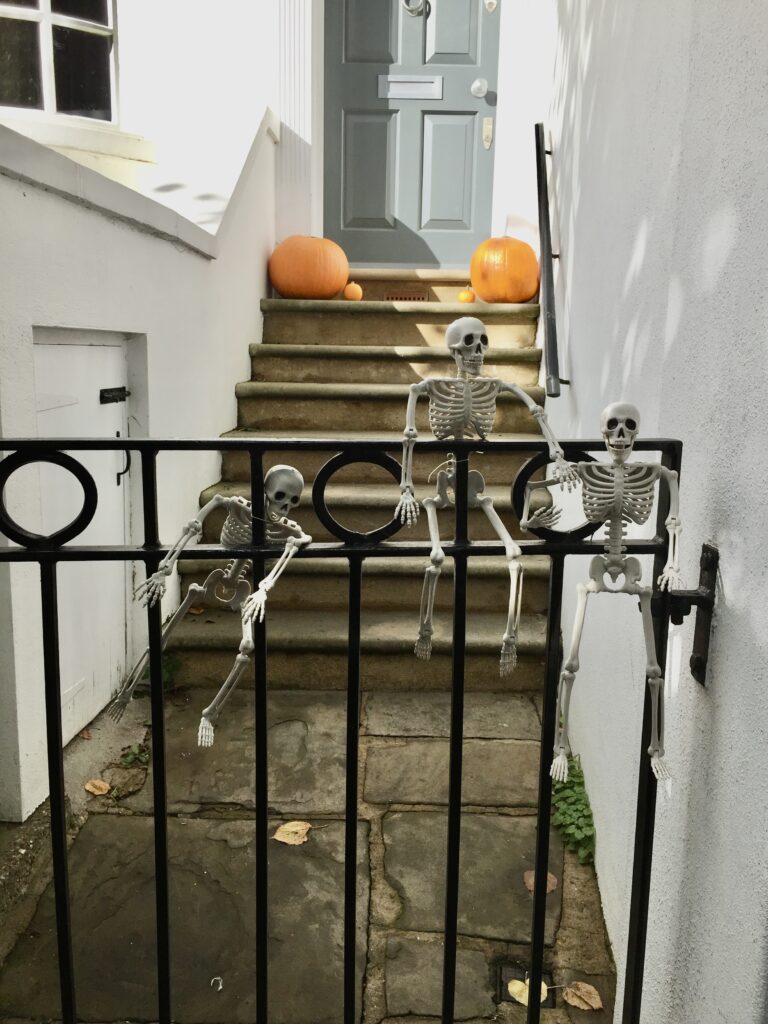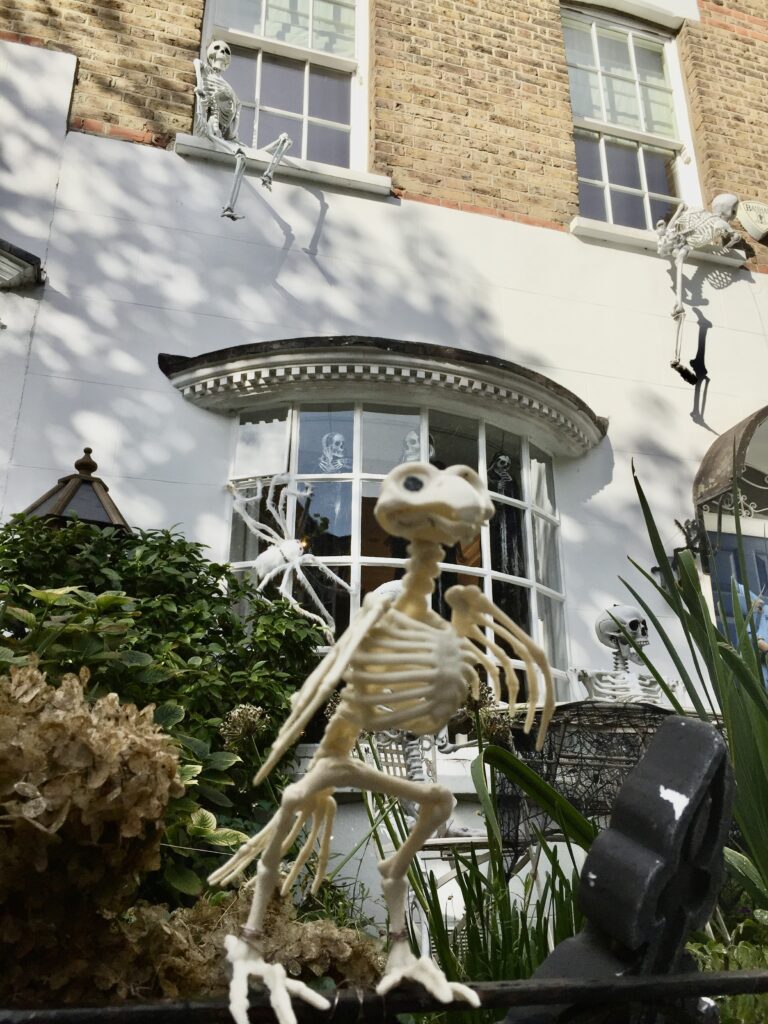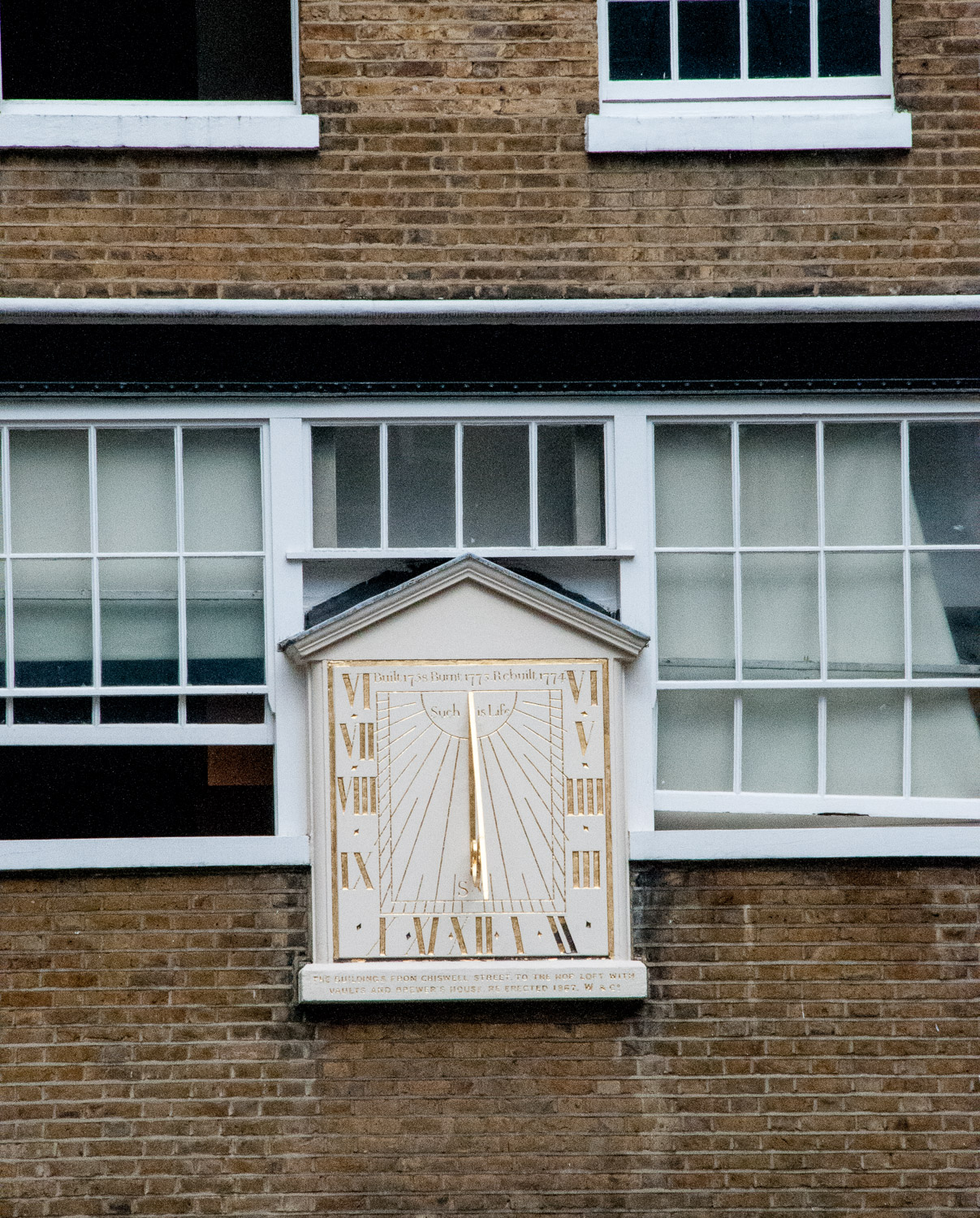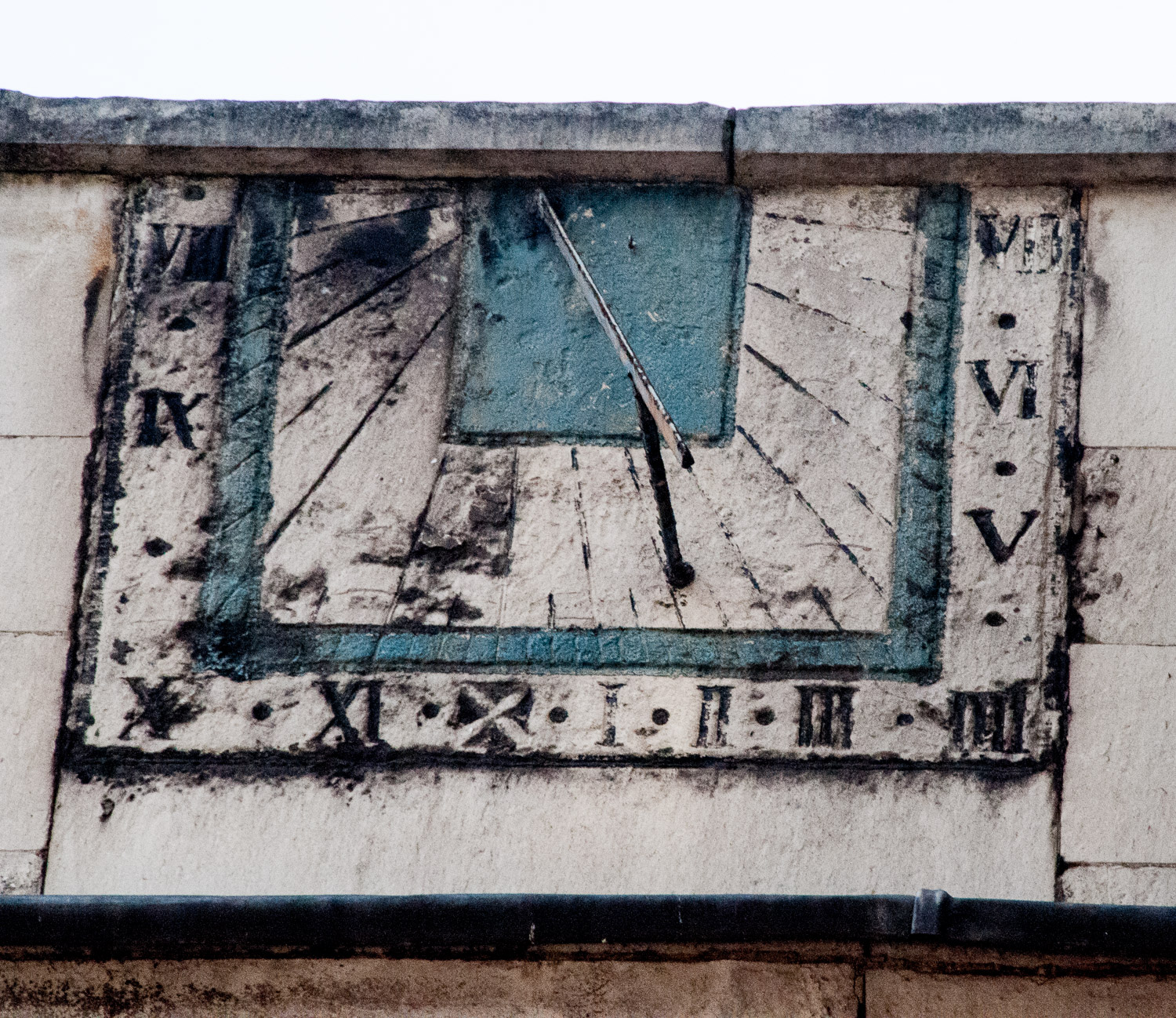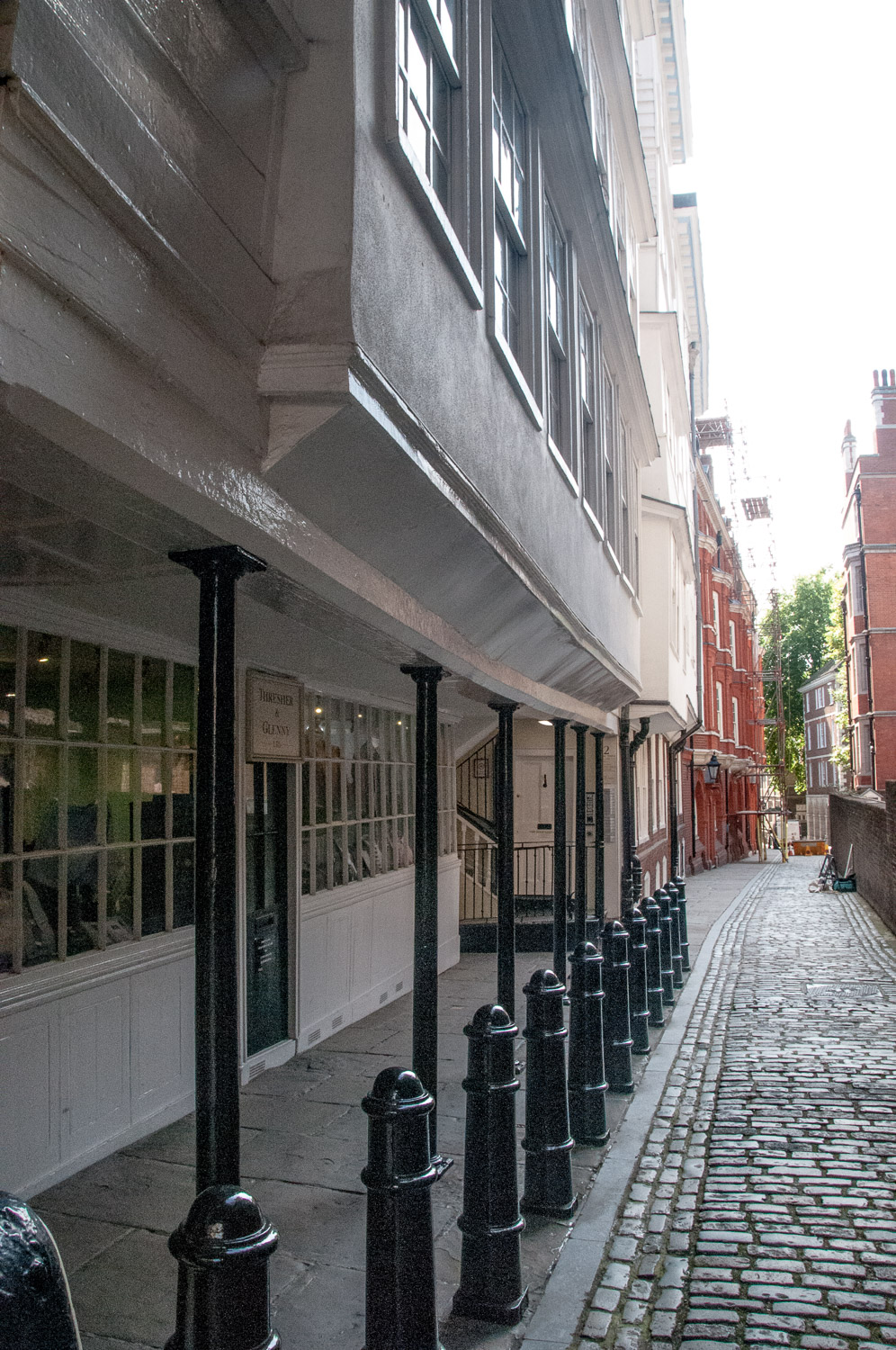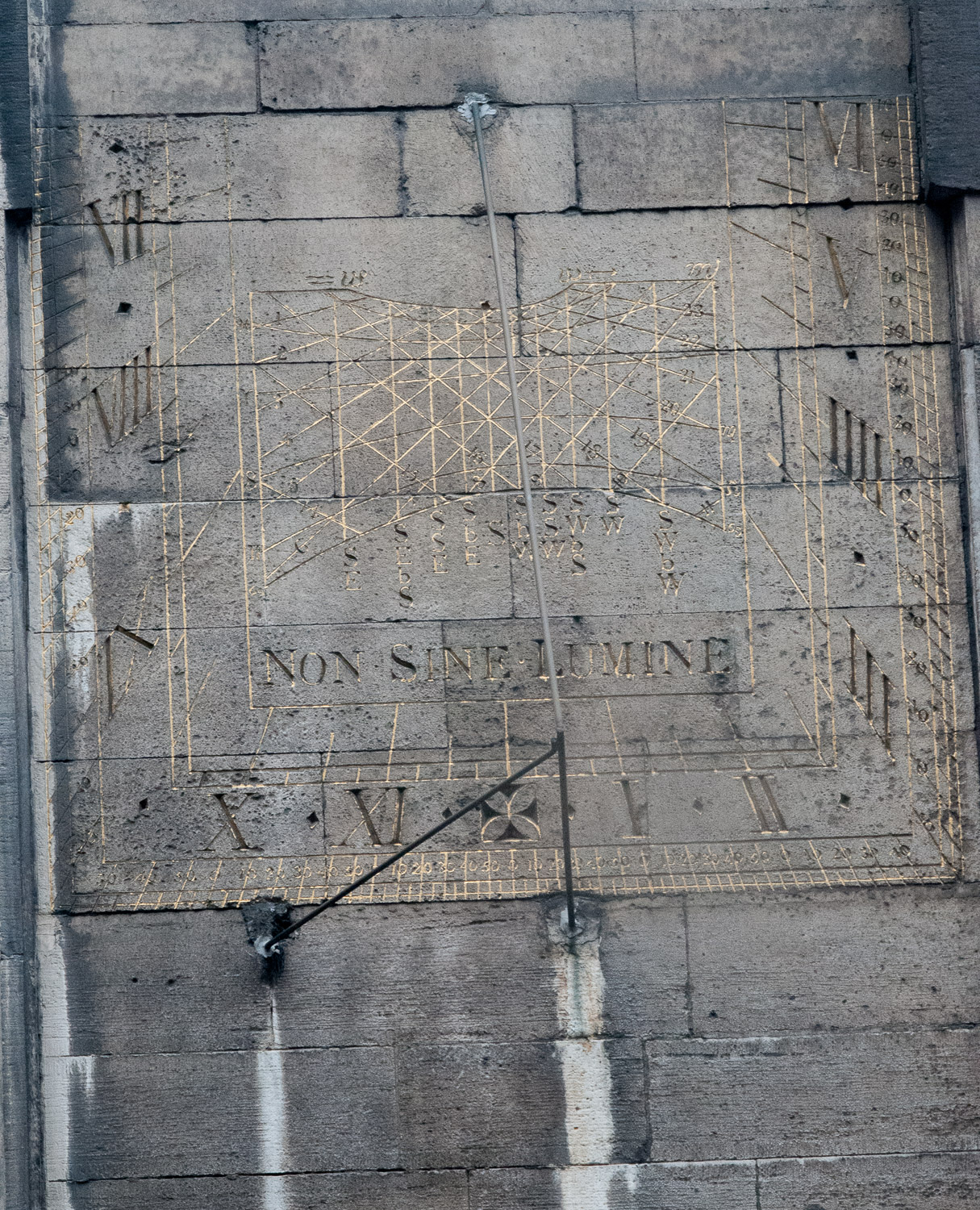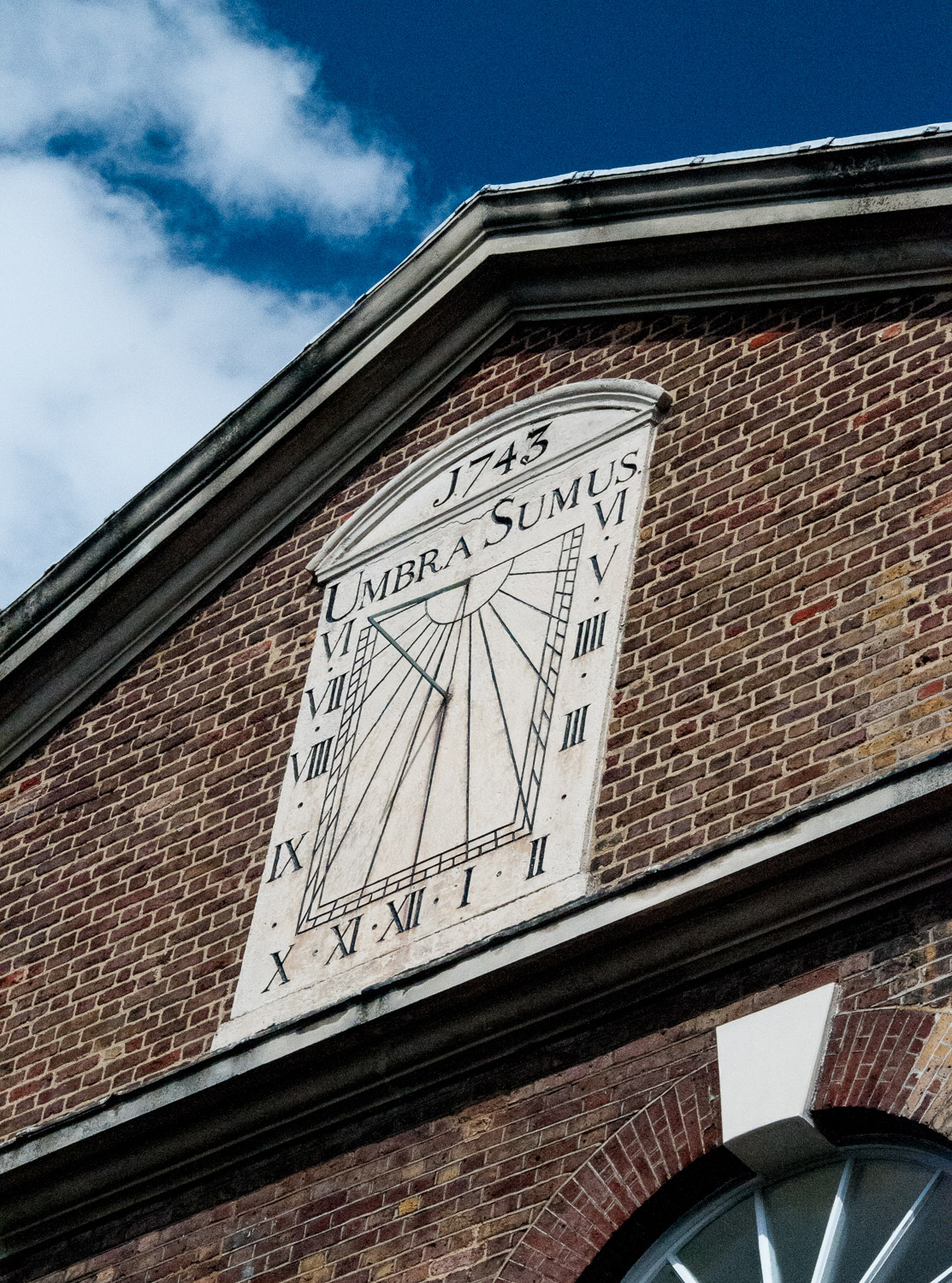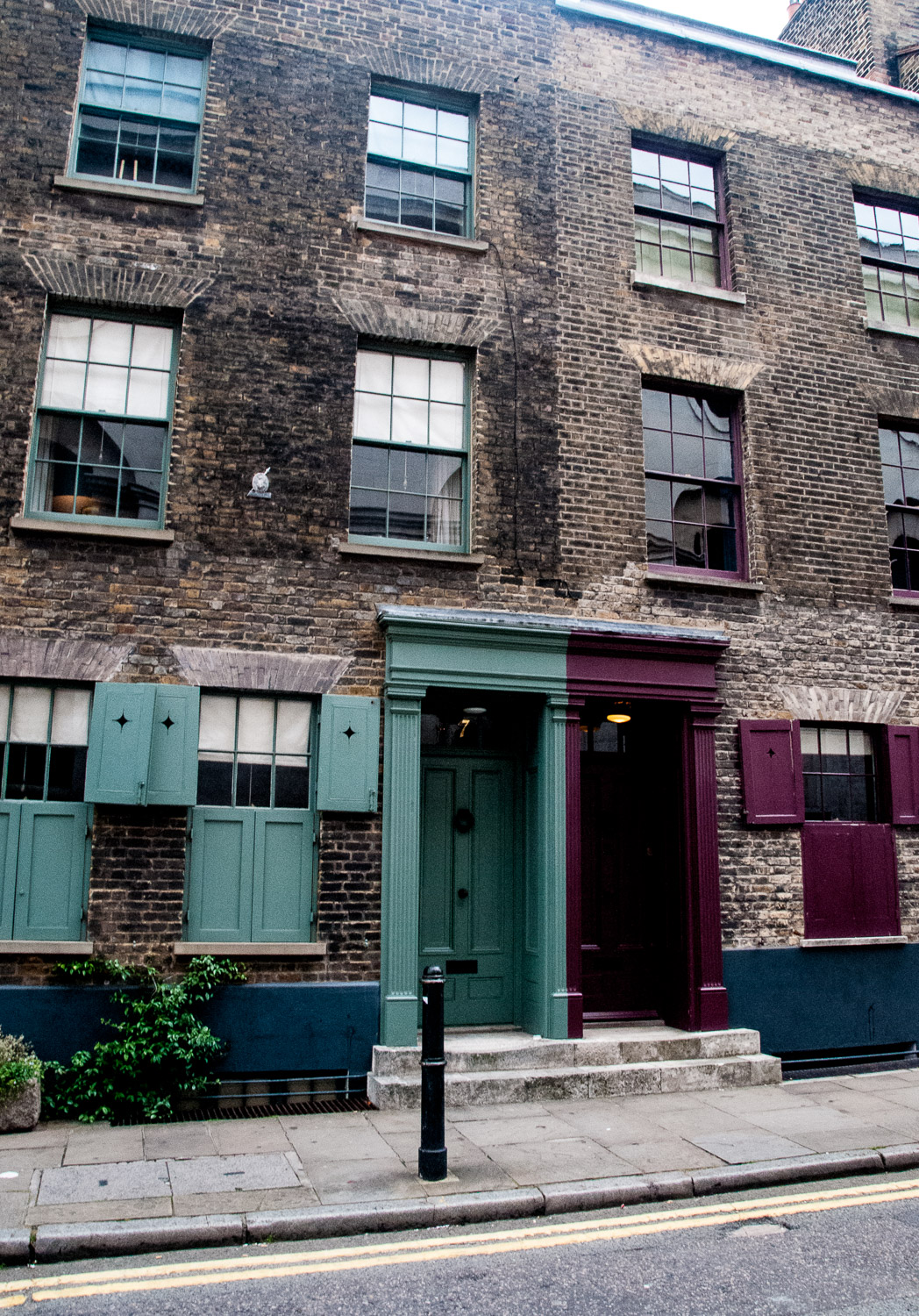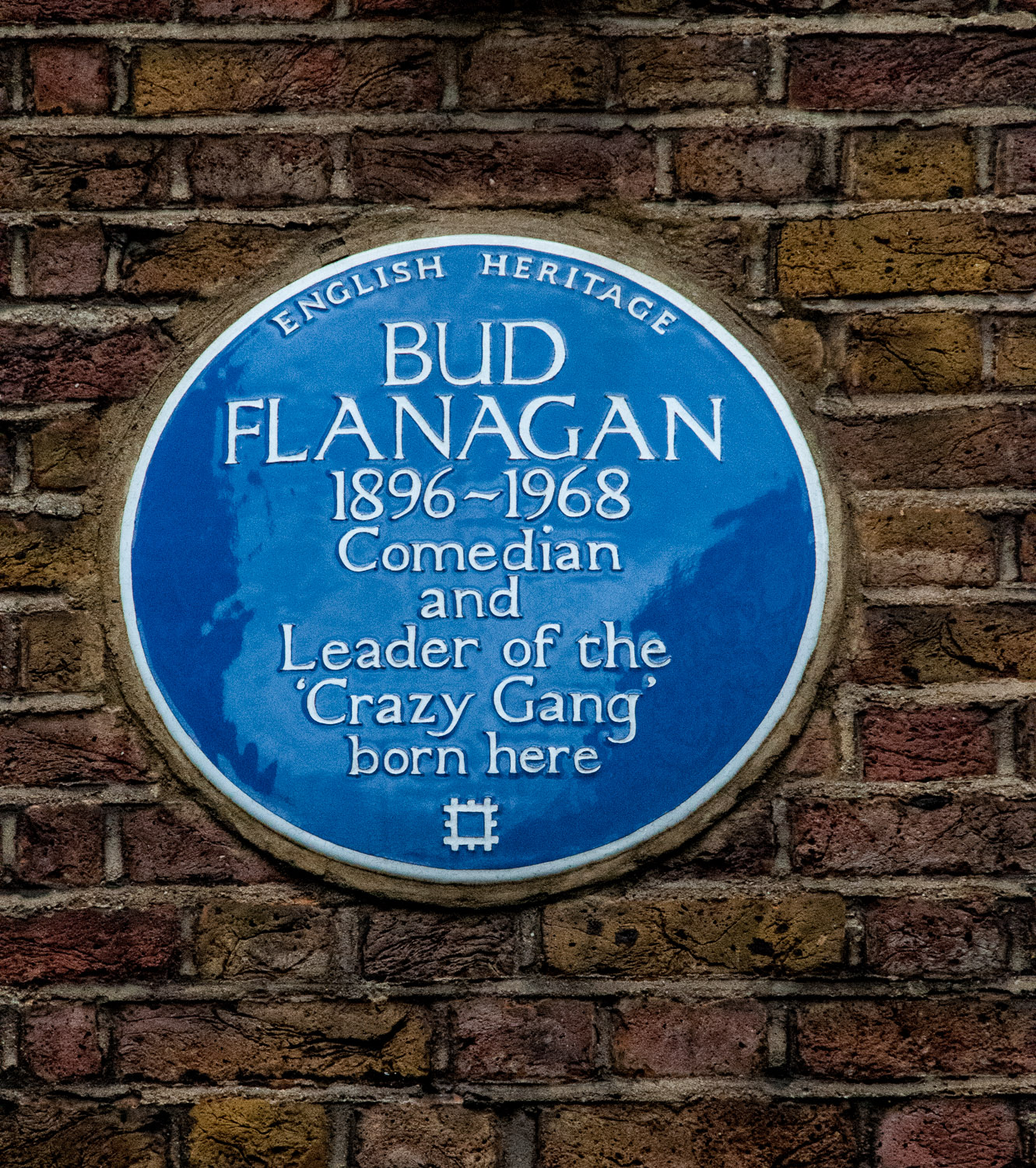Last week I mentioned my visit to St Etheldreda’s church in Ely Place and promised to return, which I duly did on a lovely sunny Monday morning this week.
Ely Place was until relatively recently considered to be a part of Cambridgeshire. For centuries, it was an enclave – an area of land physically located in the City of London but not under its jurisdiction. Instead, it was privately owned by the Bishops of Ely, and even today the street has its own gatehouse and beadles …
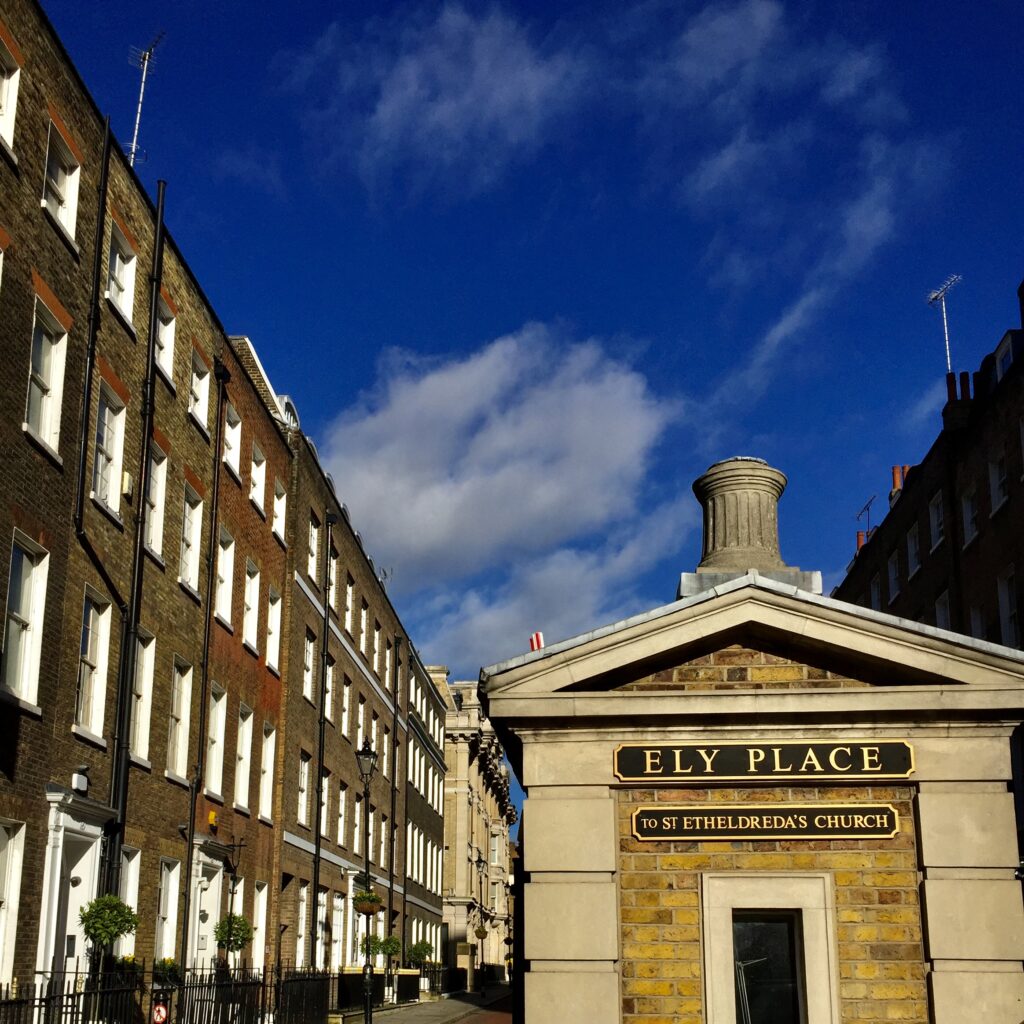
The houses date from the 1770s.
Tucked away down a narrow passage on the left is the quaint Ye Olde Mitre pub. When I first visited it back in the 1970s it kept shorter ‘Country’ rather than ‘City’ opening hours …
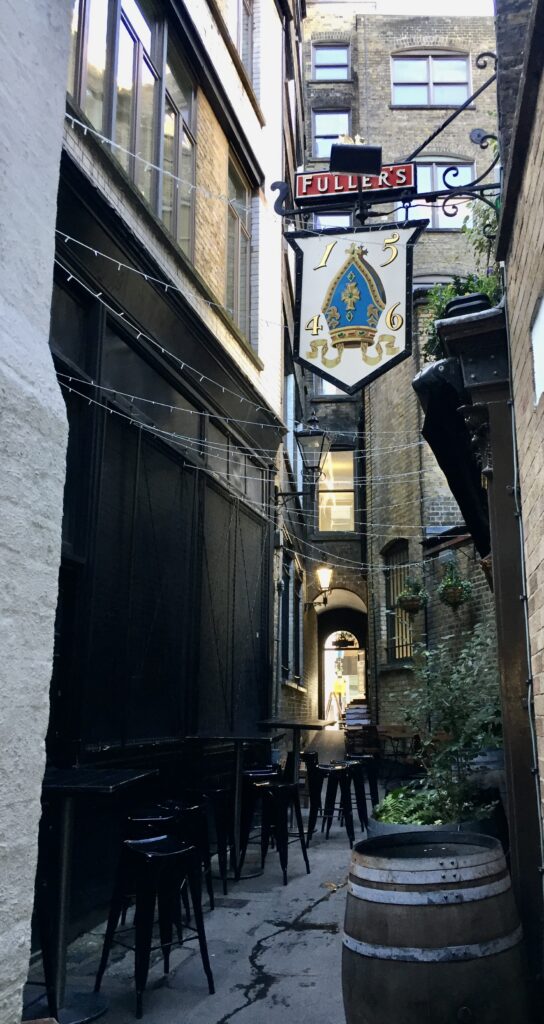
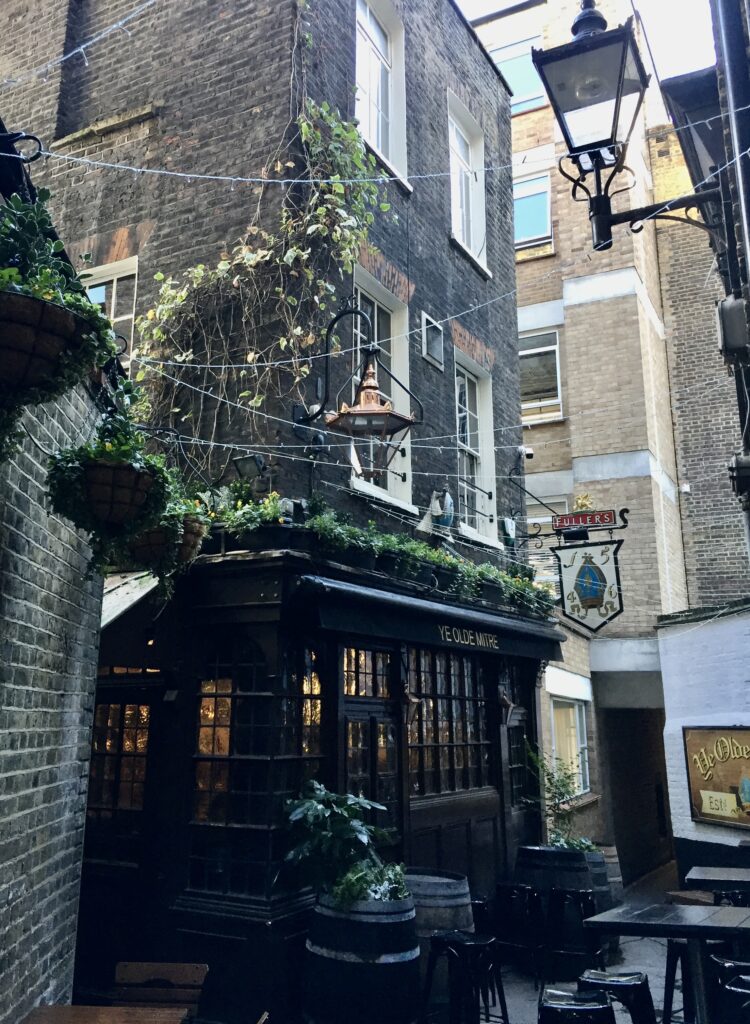
Further north along Ely Place the church of St Etheldreda is set back from the road …
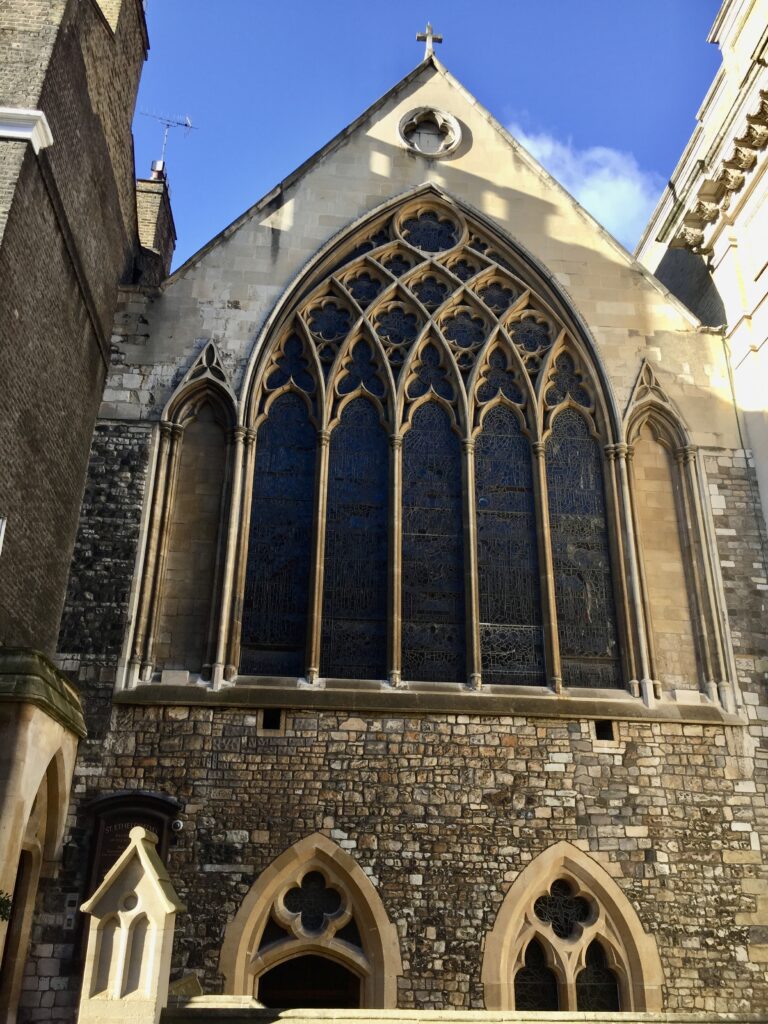
The original name of the saint celebrated here was Æthelthryth and this eventually evolved into Etheldreda which, in turn, sometimes became pronounced Audrey (a girl’s name now somewhat out of fashion). This explains the naming of the late Victorian block of flats called Audrey House that nudge up against the church itself …
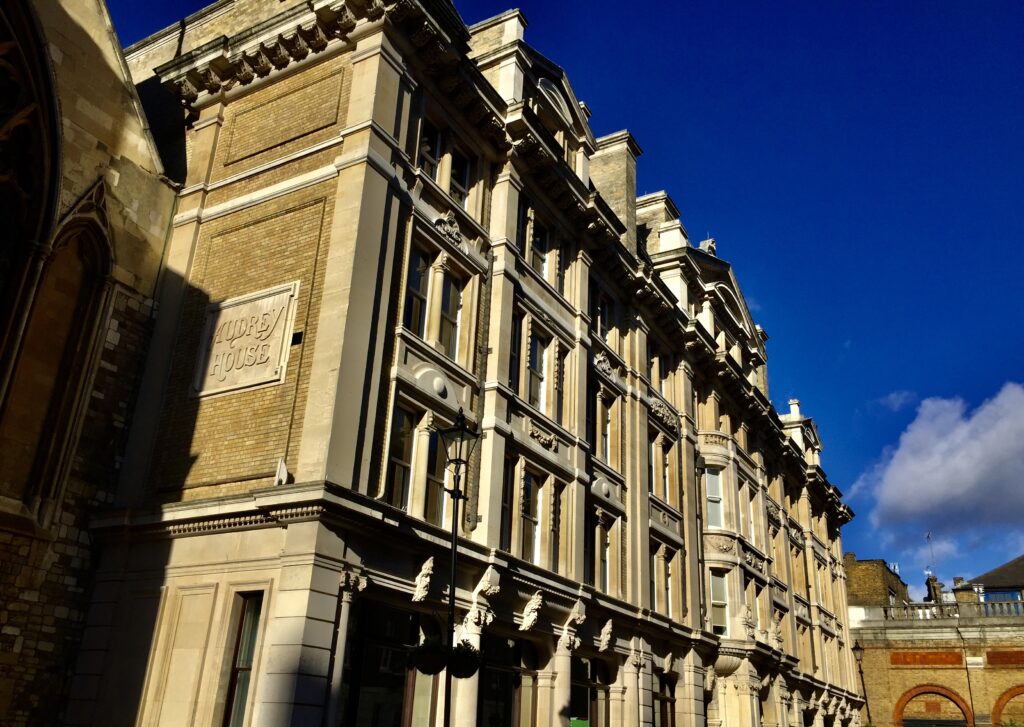
The Bishop of Ely once had a palace in London back in the 13th century. To get an idea of the extraordinary wealth of the church before the Dissolution of the Monasteries by Henry VIII, this is a section of the so-called Agas map of 1561 in which my fellow blogger London Inheritance has marked the streets that formed the boundaries to the Bishop’s land …
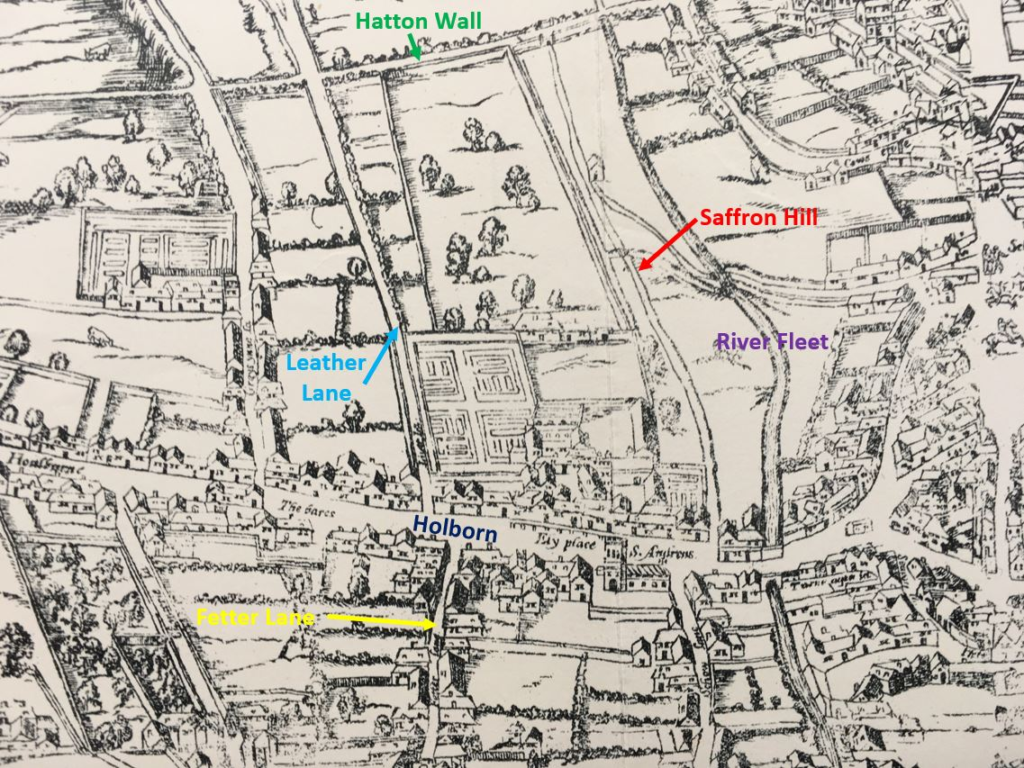
You can see the name Ely Place and St. Andrew’s church just to the right of where he has marked Holborn.
A private chapel was built alongside the palace dedicated to St Etheldreda, the nun who founded the first religious house in Ely in the 7th Century and is the saint to whom Ely Cathedral was dedicated. The chapel here dates from the late 13th Century and is one of the few buildings in London surviving from the reign of Edward I since it escaped the flames of the Great Fire in 1666 (although it was severely damaged following an air raid during the Second World War).
As soon as you enter you know you are in a rather special place …
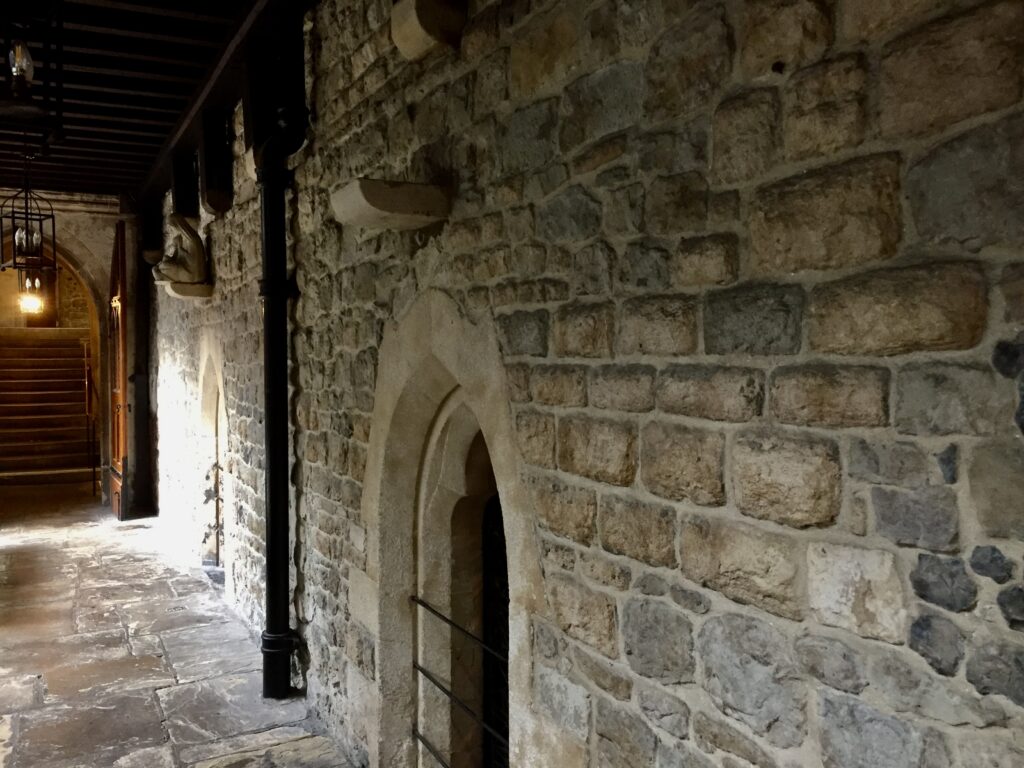
Before descending into the crypt, there is an interesting feature just to the right of the door …
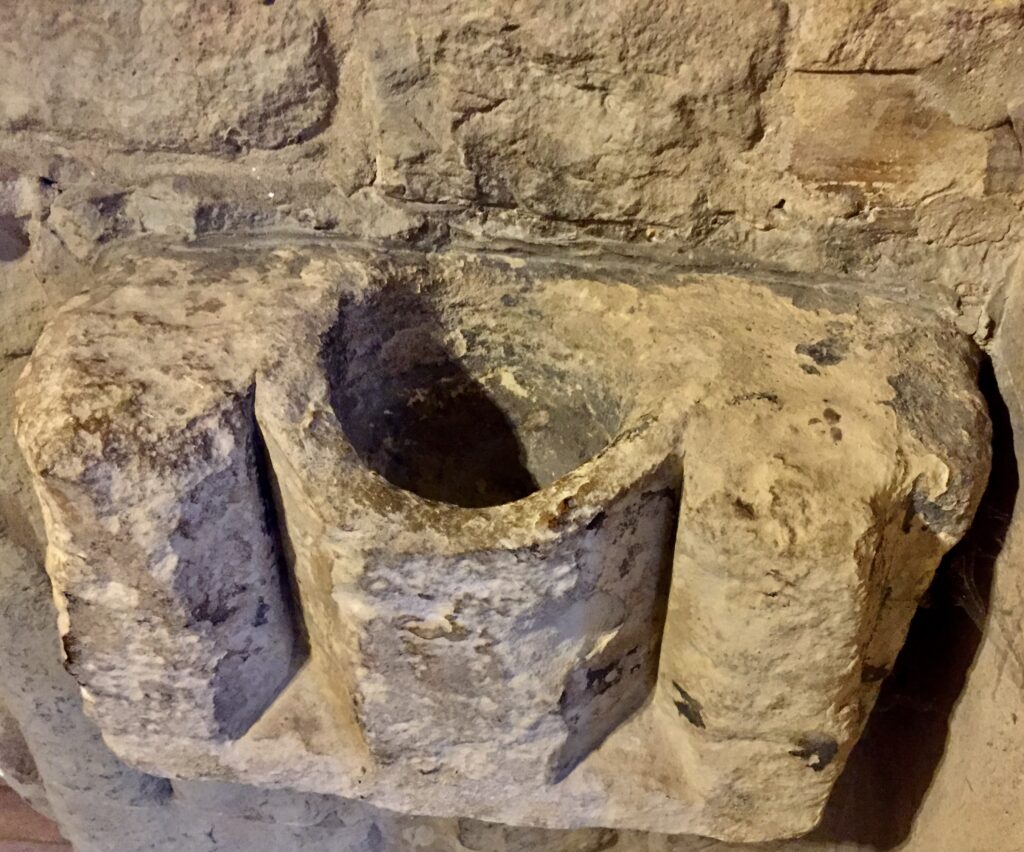
It was found when the site was excavated but its original purpose has never been established, although some have suggested it is the remains a Roman font.
Down the steps into the crypt …
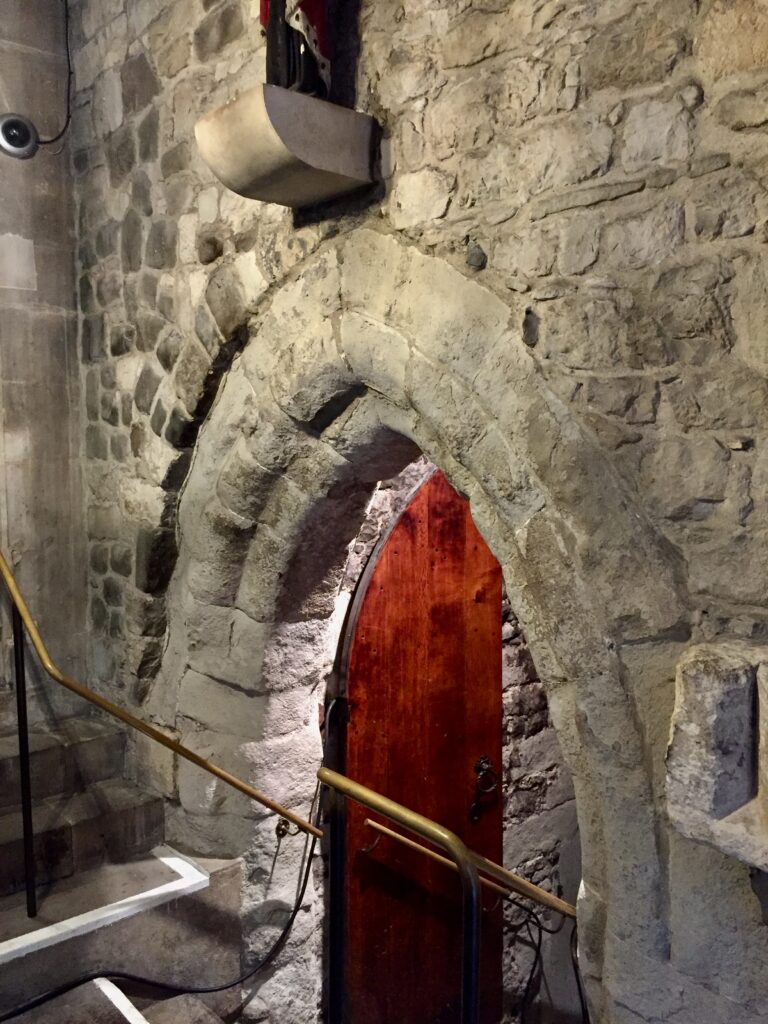
When I visited the space was laid out for a function of some kind …
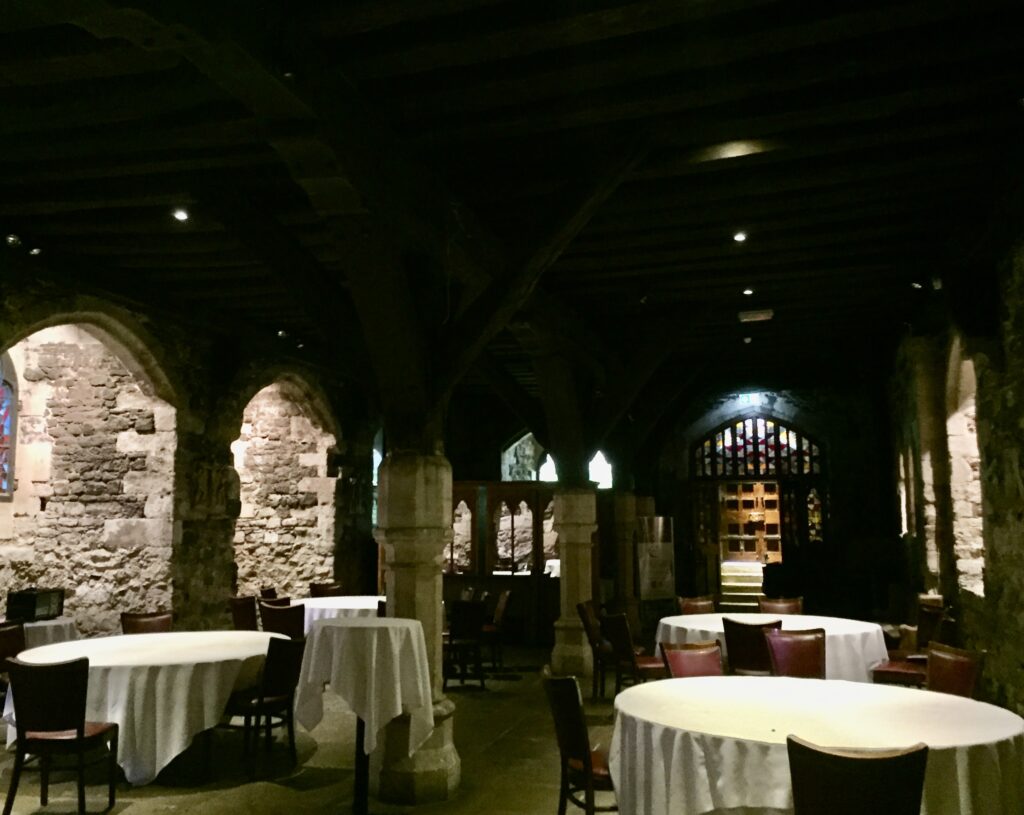
Some of the niches surrounding the venue …
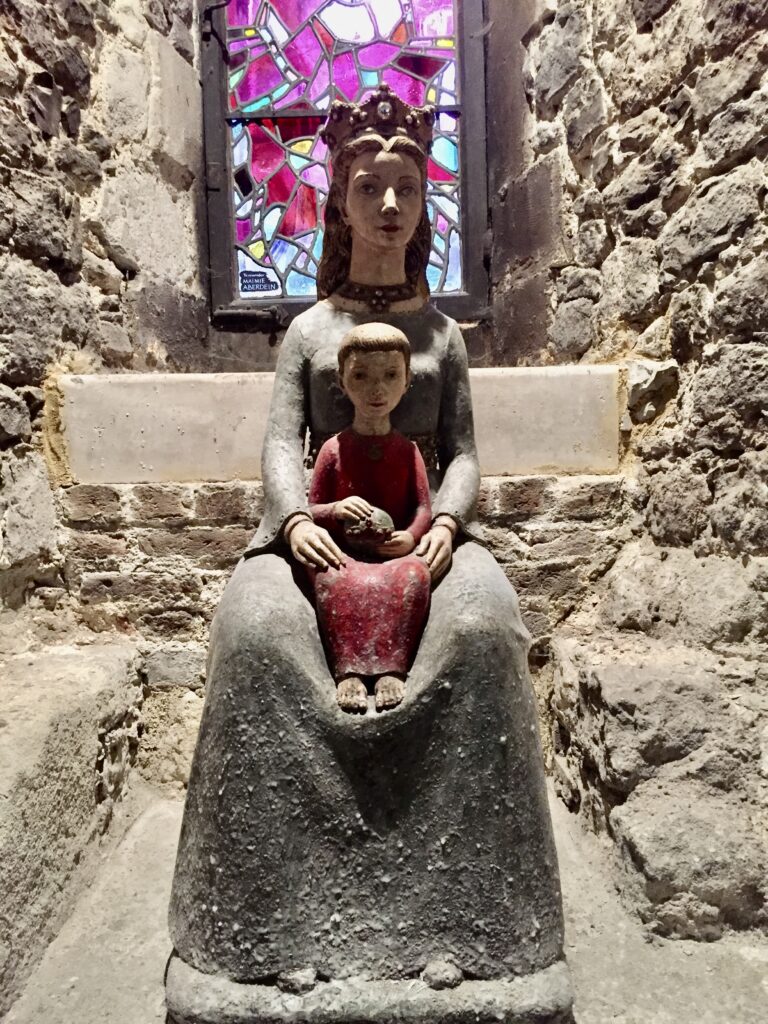
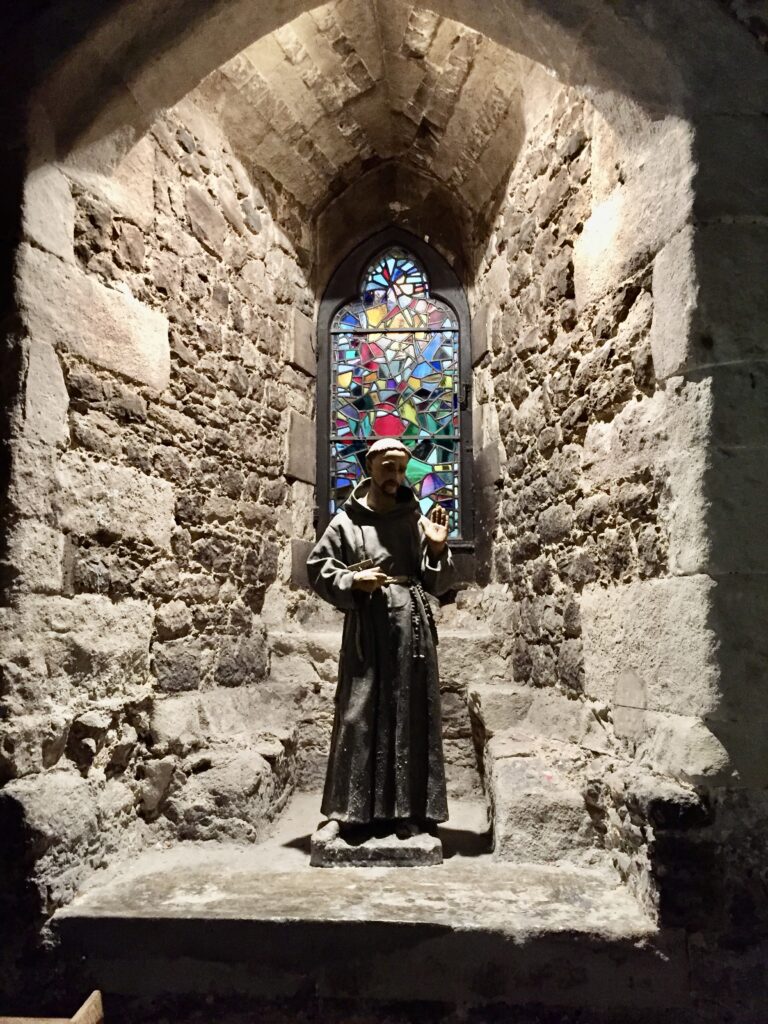
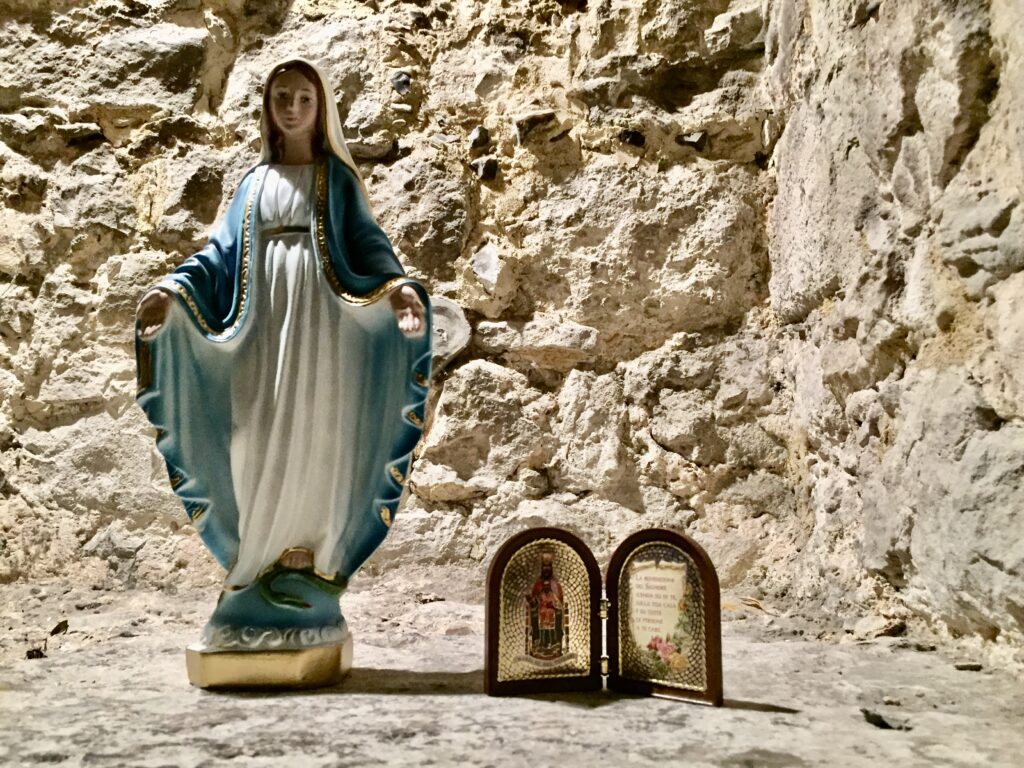
Back upstairs now to the upper church.
On the way you pass a Royal coat of arms which commemorates the reopening of the church after bomb damage repair on 2nd July 1952 …

Also this memorial to William Lockhart …
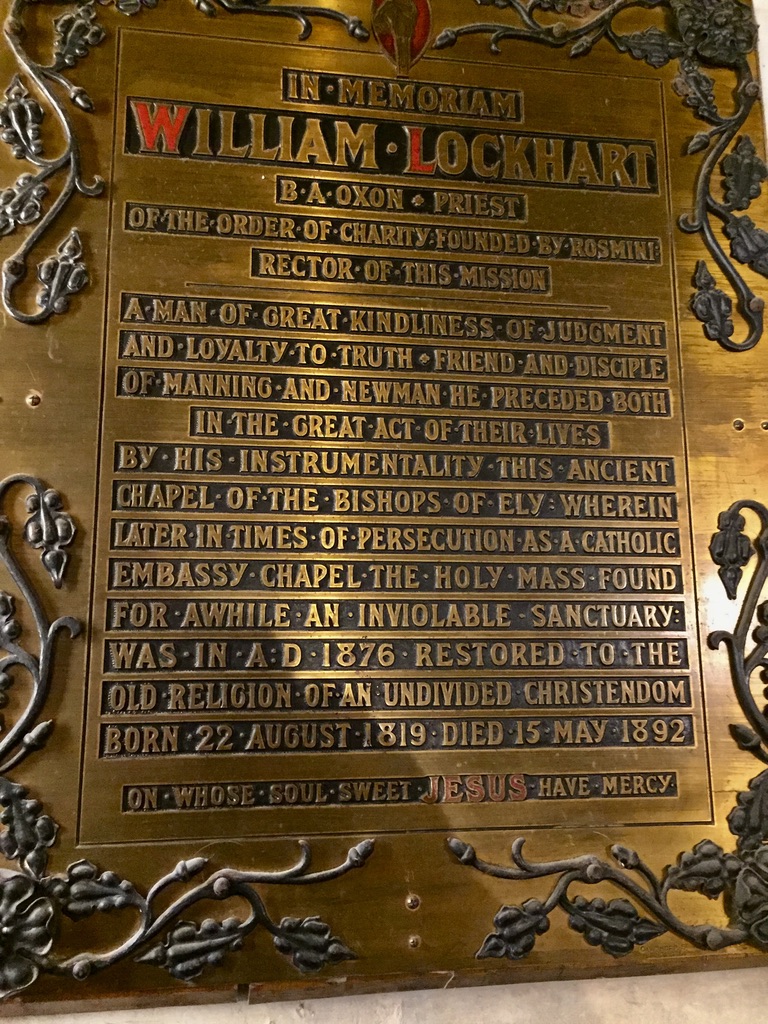
The upper church is a beautiful, spiritual place with some stunning post-War stained glass …
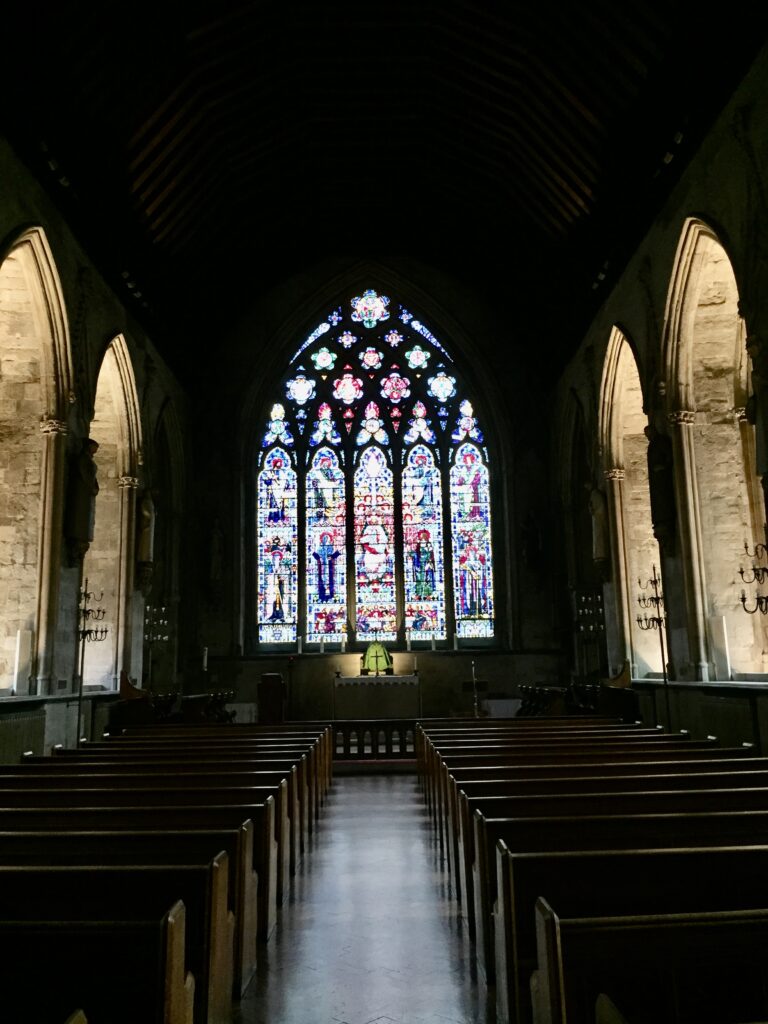
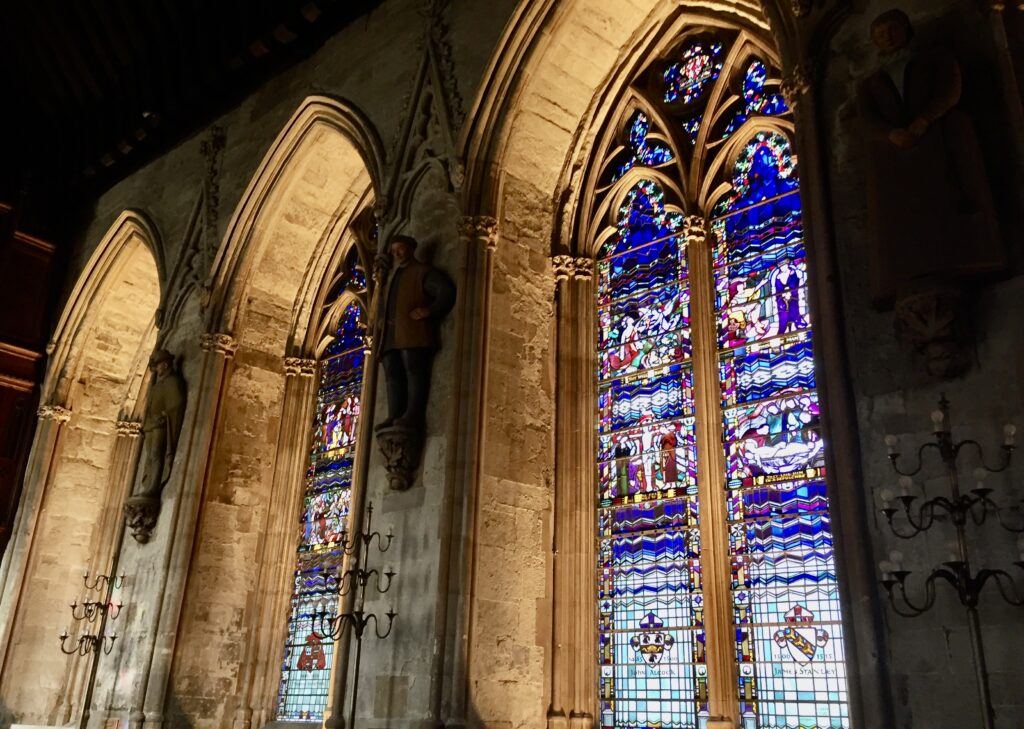
In the centre of the east window is Christ whilst at the apex God the Father surmounts the choir of angels …
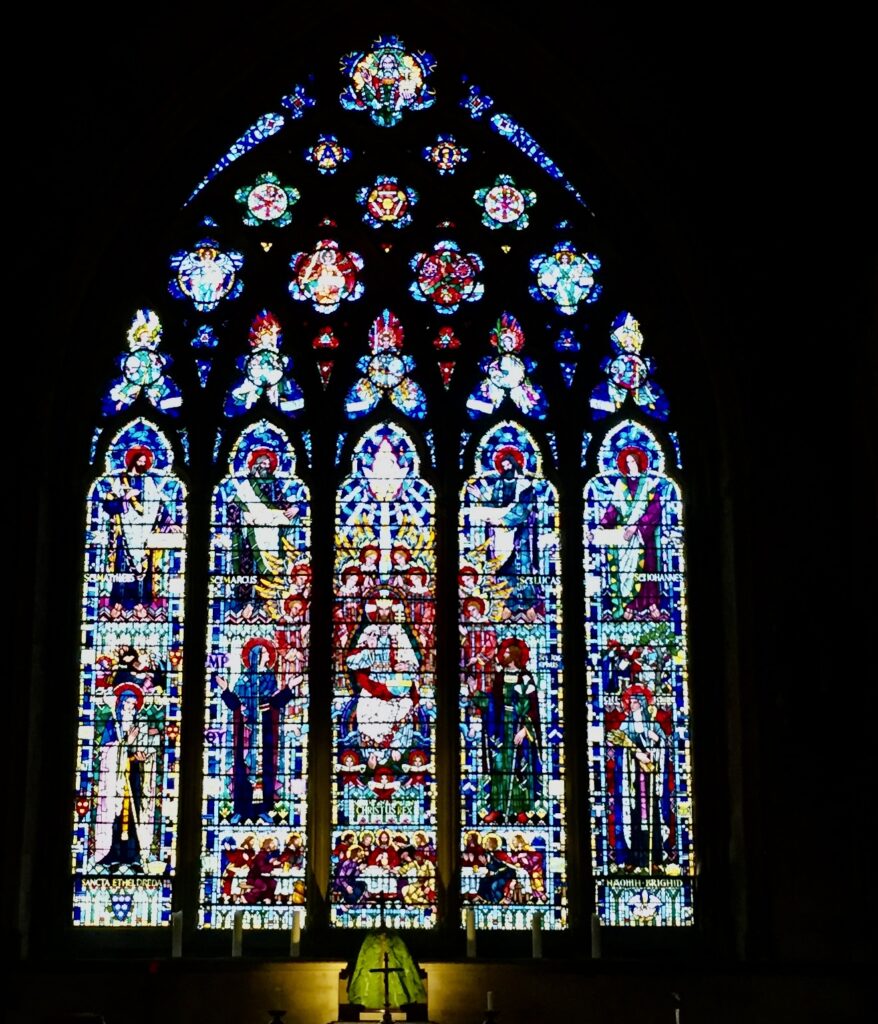
To the left of Mary, the Mother of God, stands St Etheldreda, holding an image of the monastery she founded …

The west window is dedicated to the English martyrs. Five martyrs, each holding a palm, stand underneath the Tyburn gallows …
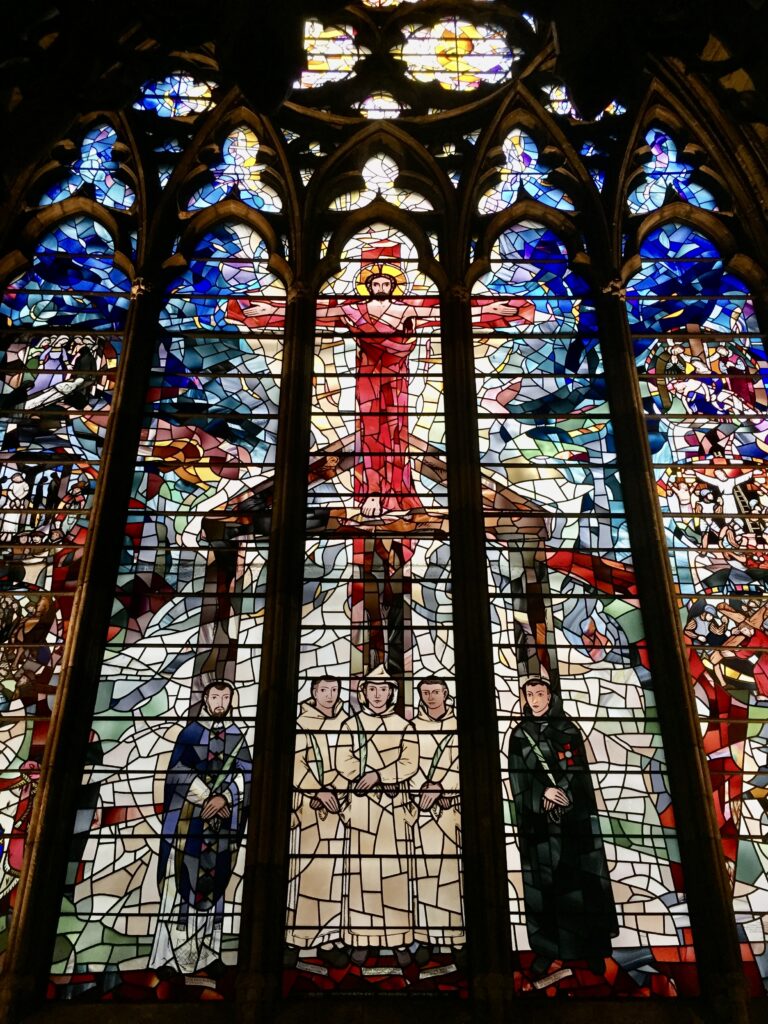
Martyrs hang on the ‘Tyburn Tree’ prior to being ‘drawn and quartered’ …
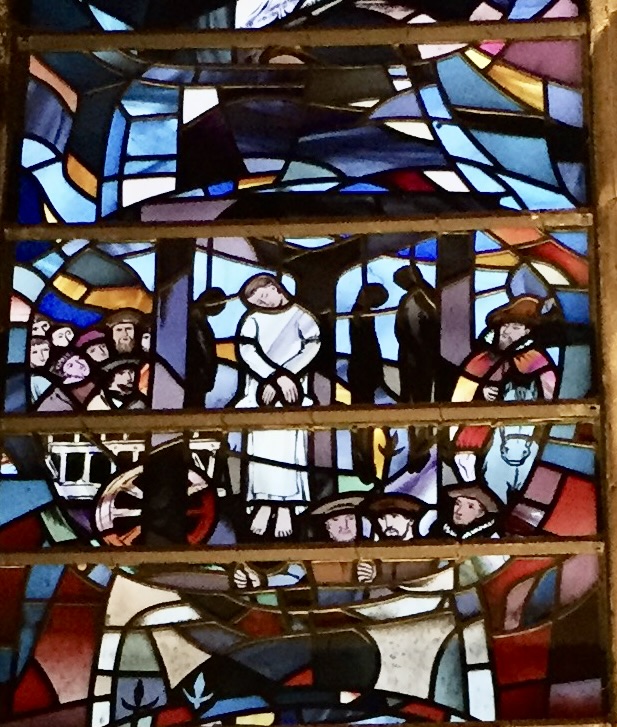
They are also commemorated with statues standing on corbels along both sides of the upper church. Here are three of them, all executed at Tyburm.
Anne Line, a sempstress, martyred in 1601 …
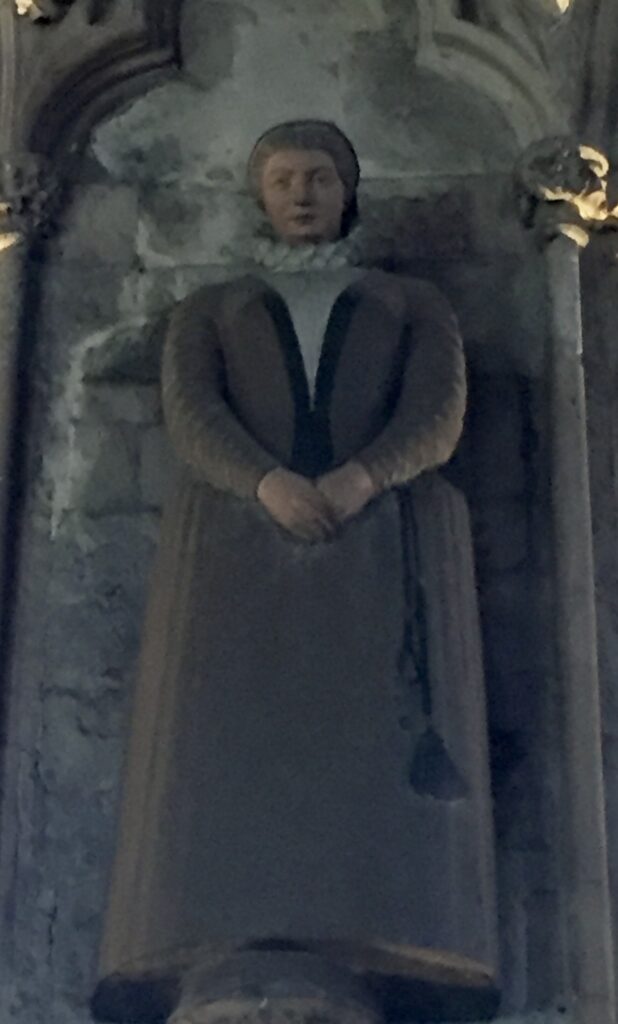
John Roche, a Thames Waterman, martyred in 1588 …

Edward Jones, a Welsh gentleman, martyred 1590 …
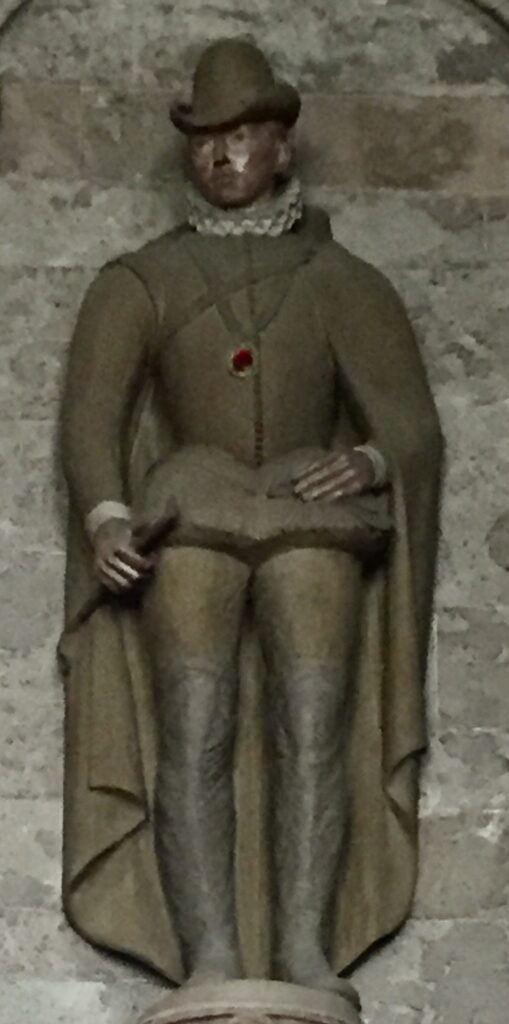
Alas there was no sign of the reliquary containing part of the saint’s ‘uncorrupted’ hand that I mentioned in my last blog. Presumably it’s stored away for safe keeping.
Overall St Ethelreda’s is a calm, welcoming place – ideal for quiet contemplation away from the hustle and bustle of the city. I’d strongly recommend a visit both for that reason and for its historical importance.
If you want to read more about the church and the area go to the excellent London Inheritance blog. If you visit the church do purchase the guide book – it is very well written with excellent illustrations …
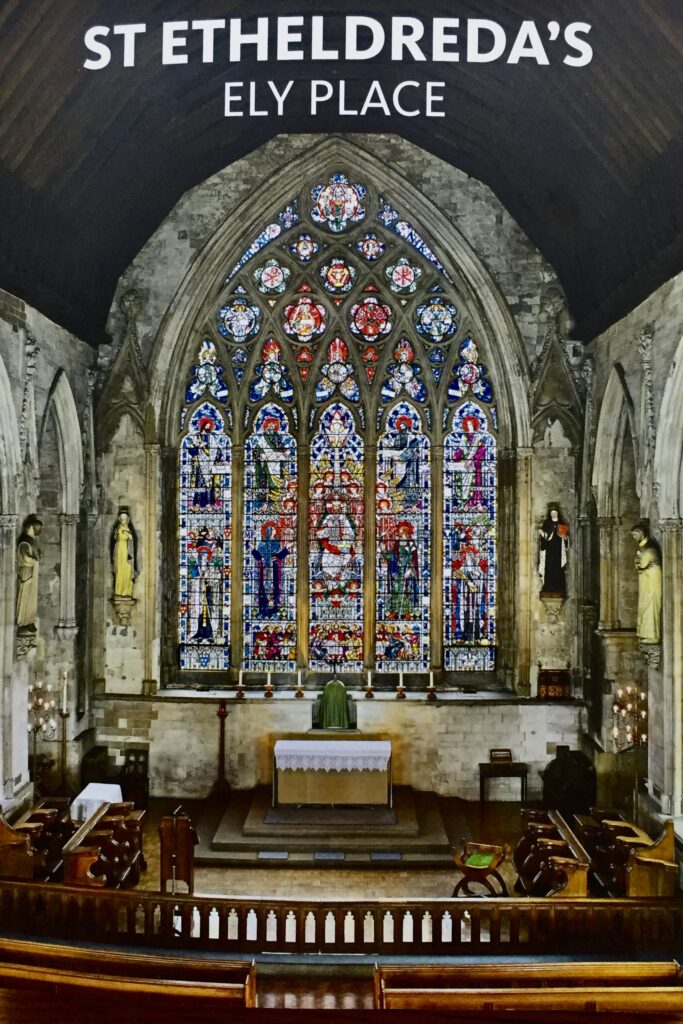
If you would like to follow me on Instagram here is the link …
